Airport profile: Barcelona

In Focus: Edmonton’s airport city
Special report: Logistics hubs


Airport profile: Barcelona

In Focus: Edmonton’s airport city
Special report: Logistics hubs


Volume 28 – Issue 3, 2023


Editor
Joe Bates +44 (0)1276 476582 joe@airport-world.com
Sales Directors
Jonathan Lee +44 (0)208 707 2743 jonathan@airport-world.com
Jon Sissons +44 (0)208 707 2743 jon.sissons@airport-world.com
Advertising Manager
Andrew Hazell +44 (0)208 384 0206 andrewh@airport-world.com
Design, Layout & Production
Mark Draper +44 (0)208 707 2743 mark@airport-world.com
Subscriptions subscriptions@aviationmedia.aero
Managing Director
Jonathan Lee +44 (0)208 707 2743 jonathan@aviationmedia.aero
Iam not sure if it is the same in the rest of the world, but in the last few months in the UK, the gradual increase in adverts for overseas holiday packages is a sure sign that international travel is well and truly back on the agenda.
It may be June, but it seems you cannot put the TV on without seeing adverts for Jet2holidays, Viking Riverboat cruises or expensive, glossy films promoting Turkey, Dubai, Saudi Arabia and countless other countries.
You can read about some of these initiatives in this 'planning & design’ themed edition of Airport World. They include the construction of a new megahub in Poland; commercial development at Edmonton International Airport; and a feature from Dr John Kasarda about the creation of worldclass air logistic hubs.
Published by Aviation Media Ltd
PO BOX 448, Feltham, TW13 9EA, UK
Website www.airport-world.com
AirportWorld is published six times a year for the members of ACI World. The opinions and views expressed in AirportWorld are those of the authors and do not necessarily reflect an ACI World policy or position.
ISSN: 1360-4341
The content of this publication is copyright of Aviation Media Ltd and should not be copied or stored without the express permission of the publisher.
The other way of looking at it, of course, is that it is practically summer now and there would have been no need for any of these adverts at this time of the year in prepandemic days as, traditionally, most people in Europe would have booked their summer holidays in January or February to ensure that they got the best deals and had something to look forward to later in the year.
So, perhaps another way of looking at things is to see the glut of adverts for summer holidays now as more of a sign that we are getting there as an industry, but still have a little way to go before we can truly say that aviation has finally recovered from the pandemic, particularly when it comes to long-haul travel.
Having said that, the positivity of seeing holiday adverts again, and ACI World’s monthly traffic analysis which shows that global passenger numbers are on an upward trajectory, is good news, and once again demonstrates the strength of the aviation industry and its ability to bounce back from adversity.
Indeed, this resilience and future growth potential is what continues to attract investors to the industry and convince airports and their business partners to plan ahead and invest in facilities that will raise their operational capacities and provide new opportunities to boost their commercial revenue.
In addition, the themed section contains features about the sustainable development of San Francisco International Airport (SFO) and how the transition to electric and autonomous vehicles could impact on existing drop off and car parking infrastructure at airports.
Also in this issue, we turn the spotlight on ‘human resources’, with articles from ACI World’s vice president for safety, security and operations, Thomas Romig, about the evolution of the airport workforce; and hear from a handful of airports about the staffing challenges they face today as a direct result of job losses incurred during the global pandemic.
Our main airport feature is on Josep Tarradellas Barcelona-El Prat Airport, where director, Sonia Corrochano, explains why the gateway is a flagship hub for both Catalonia and Spain.
Spanish airport operator, Aena, and Barcelona are, of course, the hosts of this year’s joint ACI EUROPE/ACI WORLD Annual General Assembly, Conference & Exhibition, which takes place on June 26th-28th.
Elsewhere in the issue, we hear from ACI World director general, Luis Felipe de Oliveira; consider some changing work dynamics in our regular ‘people matters’ column; and report on the latest news from ACI's World Business Partners (WBP).
I hope you like the issue and look forward to seeing you at WAGA in Barcelona, which will actually be my first international trip this year!

Airport World editor, Joe Bates, reflects on the continued recovery of the aviation industry and the ‘planning and design’ theme of this issue.


ISSUE 3
Volume 28
3 Opinion
Airport World editor, Joe Bates, reflects on the continued recovery of the aviation industry and the ‘planning and design’ theme of this issue.
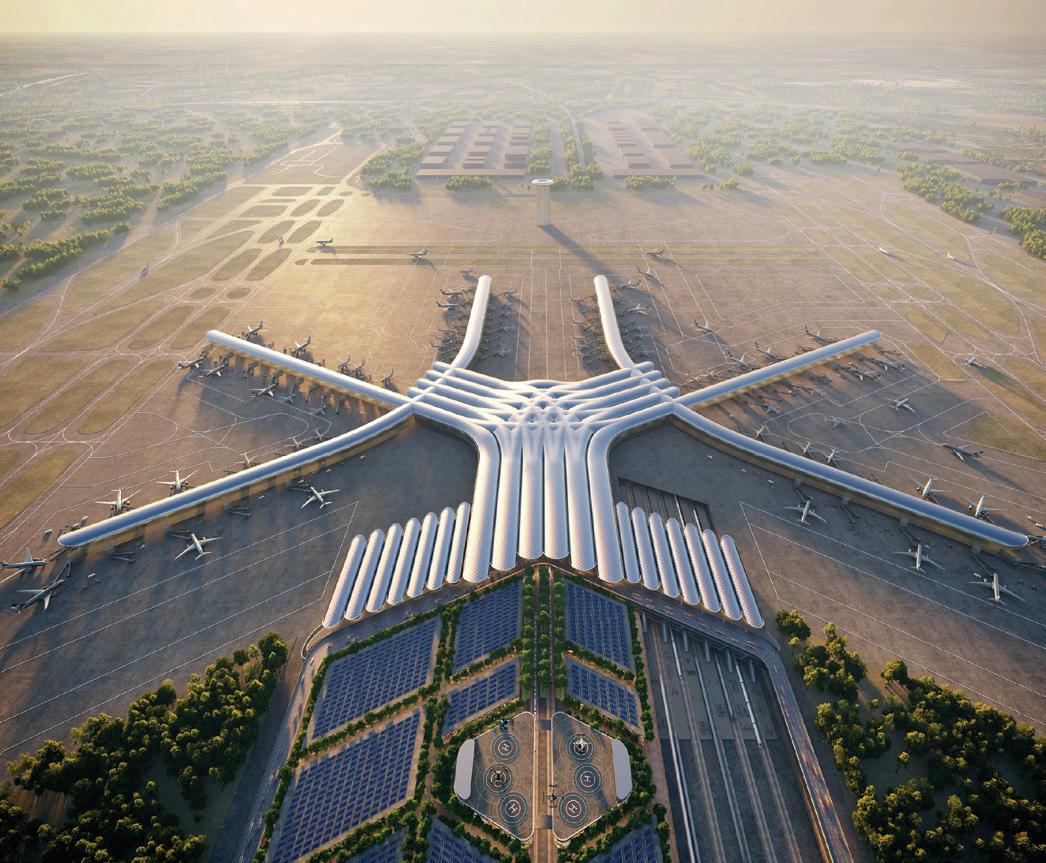
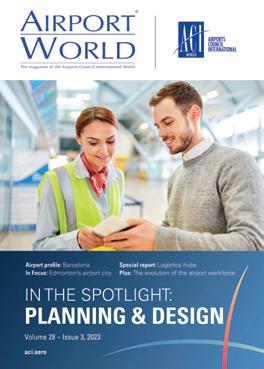
9 View from the top
ACI World director general, Luis Felipe de Oliveira, considers some of the human resources issues facing airports today and the industry’s response to the challenge.
10 ACI News
We report on the latest news, views and developments from ACI World, ACI Asia-Pacific and ACI EUROPE.

14 Catalan flagship
Sonia Corrochano, director of Josep Tarradellas Barcelona-El Prat Airport, talks to Joe Bates about the growth, development and future expansion plans of Europe's seventh busiest passenger gateway.
20
Thomas Romig, ACI World’s vice president for safety, security and operations reflects on the evolution of the airport workforce and the recruitment challenge ahead for airports.
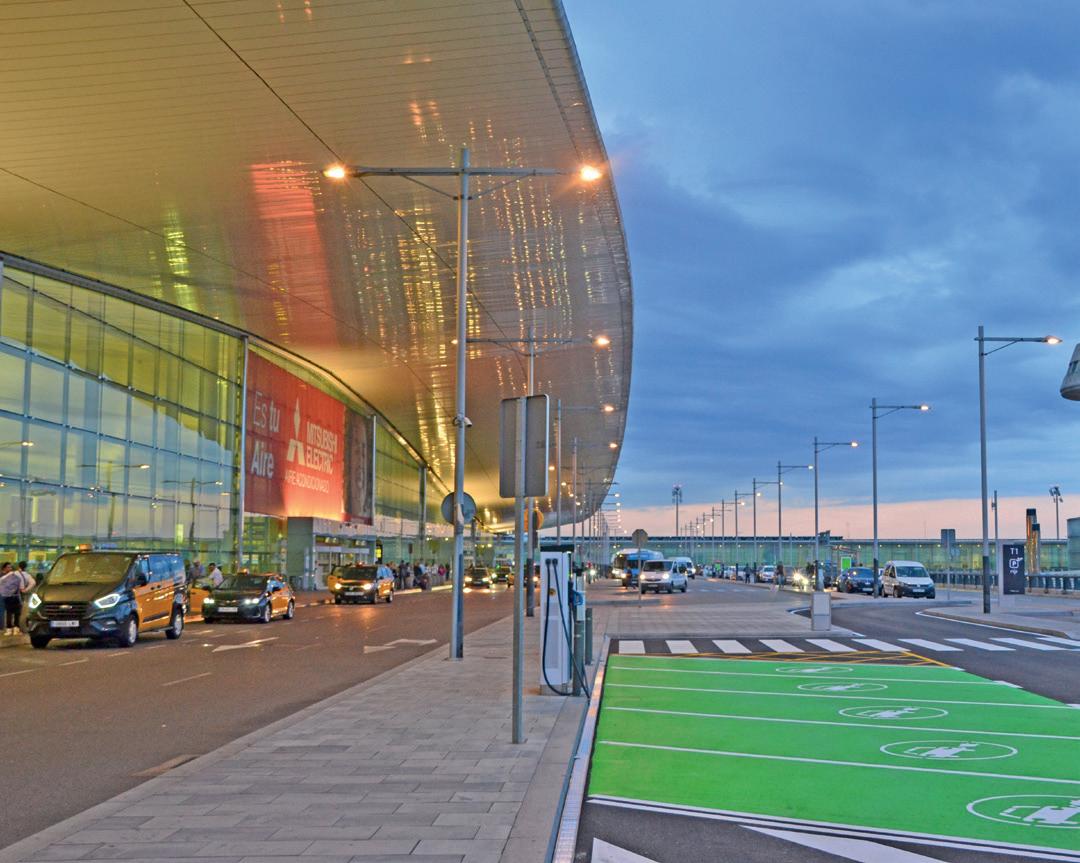
Joe Bates talks to a handful of airport operators across the globe about the impact the pandemic has had on staffing levels at their gateways.
28
MXD’s Chris LeTourneur highlights the many dimensions of Edmonton International Airport’s innovative economic and sustainable development initiatives.
The planned new megahub hub 40 kilometres southwest of Warsaw will help drive the economic development of Poland and Central and Eastern Europe, writes NACO's Lucas-Jan Ebels and Piet Ringersma.
Aerotropolis concept creator, Dr John Kasarda, explains why certain hubs prosper and describes what it takes to become a world-class air logistics hub.
San Francisco International Airport sets the industry standard for climate action and health, writes Kirsten Ritchie, Gensler's global director for climate action and sustainability.

ICF's Lewis Burroughs and Rob Rushmer look to the future and consider how the transition to electric and autonomous vehicles could impact on existing drop off and car parking infrastructure at airports.

News stories and developments from ACI World Business Partners across the globe.
Dr Richard Plenty and Terri Morrissey consider the pros and cons of adopting a systematic data-based approach to decision-making in the workplace.
Director General
Luis Felipe de Oliveira (Montréal, Canada)
Chair
Aimen Al Hosni (Muscat, Oman)
Vice Chair
Candace McGraw (Cincinnati, USA)
Immediate Past Chair
Martin Eurnekián (Buenos Aires, Argentina)
Treasurer
Arnaud Feist (Brussels, Belgium)
ACI WORLD GOVERNING BOARD
DIRECTORS
Africa (3)
Emanuel Chaves (Maputo, Mozambique)
Fabrice Grondin (Saint-Denis, Réunion)
Capt Rabiu Hamisu Yadudu (Lagos, Nigeria)
Asia-Pacific (9)
Aimen Al-Hosni (Muscat, Oman)
Mohamed Yousif Al-Binfalah (Bahrain)
Geoff Culbert (Sydney, Australia)
SGK Kishore (Hyderabad, India)
Seow Hiang Lee (Singapore)
Emmanuel Menanteau (Paris, France)
Nitinai Sirismatthakarn (Bangkok, Thailand)
Akihiko Tamura (Tokyo, Japan)
1 Vacancy
Europe (7)
Arnaud Feist (Brussels, Belgium)
Jost Lammers (Munich, Germany)
Javier Marin (Madrid, Spain)
Yiannis Paraschis (Athens, Greece)
Kadri Samsunlu (Istanbul, Turkey)
Stefan Schulte (Frankfurt, Germany)
Nazareno Ventola (Bologna, Italy)
Latin America & Caribbean (3)
Ezequiel Barrenechea (Guayaquil, Ecuador)
Mónika Infante (Santo Domingo, Dominican Republic)
Juan José Salmón (Lima, Peru)
North America (6)
Kevin Dolliole (New Orleans, USA)
Deborah Flint (Toronto, Canada)
Joseph Lopano (Tampa, USA)
Candace McGraw (Cincinnati, USA)
Sam Samaddar (Kelowna, Canada)
Roelof-Jan Steenstra (Toronto, Canada)
Regional Advisers to the World Governing Board (10)
Lew Bleiweis (Asheville, USA)
David Ciceo (Cluj-Napoca, Romania)
Alex Gitari (Nairobi, Kenya)
Fred Lam (Hong Kong)
Tan Sri Bashir Ahmad Abdul Majid (Delhi, India)
Mpumi Mpofu (Johannesburg, South Africa)
Andrew O’Brian (Washington DC, USA)
Jorge Rosillo (Galapagos, Ecuador)
Brian Ryks (Minneapolis-St Paul, USA)
1 Vacancy
WBP Observer
Esperanza Morales Martin (Global Exchange)
Correct as of June 2023



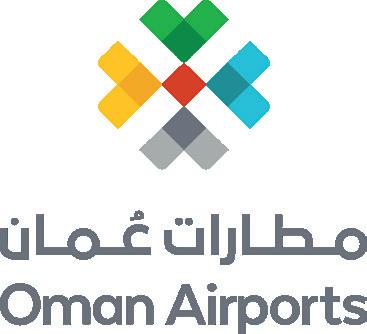
Ahuge increase in air traffic demand is hitting the headlines, alongside the suggestion that aviation’s recovery from the pandemic is almost complete.
What’s more, ACI World’s latest forecasts reveal that total passenger traffic worldwide is predicted to reach 19.3 billion passengers by 2041. This includes a steep recovery gradient observed in the first five years (CAGR for 2021–2026) at 19%.
Although that is certainly good news, this also means that an increasing amount of skilled workforce will be needed to make the aviation ecosystem run efficiently and sustainably.
While technology will play an increasing role in the automation of processes, the human touch, particularly in frontline activities such as customer services to passengers, will remain crucial. It is clear that a mix of technology and a diverse workforce will play a key role in improving both airport operations and the customer journey.
COVID-19 brought mass furloughs, redundancies, early retirements, and resignations. According to the Air Transport Action Group (ATAG), the aviation workforce contracted 43% during the pandemic, equating to 4.8 million jobs globally.
As airports rehire and upskill their personnel with the return of air traffic, workforce challenges continue to affect airport operations. Staff shortages is a challenge felt by many service industries, not least aviation.
However, a lot of proactive work is being conducted. The aviation community (ANSPs, airports, airlines, ground handlers) has actively been engaged in planning and co-ordination activities to ensure a more effective response to the peak air travel demands.
Many airports have been working directly with their stakeholders to ensure that staffing levels are sufficient, that contingency plans are developed, and that communication to the traveling public will be provided on the conditions that they may face.
To assist the industry in the longer term, ACI has explored possible solutions in our whitepaper, The Evolution of the AirportWorkforce. And we passed a resolution at our October 2022 World General Assembly, Creating a strong and diverse airport workforce to meetfuture demand and ensure the long-term sustainability and resilience of the aviation system.
A key aspect of the resolution, and of staff attraction, recruitment and retention in general, is the need for greater diversity, equity and inclusion (DE&I). Women and minority groups are under-represented in aviation, and it has the potential to stunt our sustainable growth. It can affect performance and even limit our potential to provide positive and lasting socioeconomic benefits.
The industry must be accessible and attractive to all individuals, regardless of their age, background, gender, ethnicity, or disability. A diverse workforce is an innovative and creative workforce and DE&I will be vital to a great customer experience going forward.
That great customer experience will also depend on getting the employee experience right.
Of course, if we are to understand the employee experience and staff engagement, we first need to measure it and the ACI Employee Survey for Customer Experience (ECE) does just that. The ECE survey can help airports understand and measure employee and stakeholder motivations, engagement, and commitment to airport’s customer experience strategy. It fosters a positive customer experience culture among airport employees and stakeholders.
Importantly, employee engagement is not a one-size-fits-all strategy. Millennials and Gen Z have different expectations and motivations from older generations, and the same is true for office versus frontline employees. The more granularity there is in employee journey maps –a pathway for an individual’s career progression – the better.
Ultimately, the aim is to build a framework for attracting and creating engaged employees and to establish a culture that is authentic, unique and customer centric. Indeed, ‘Empowering the Airport Community for a Customer-Centric Culture’ will be the theme for our forthcoming ACI World Customer Experience Global Summit in Seoul on September 3-4, 2023, hosted by Incheon Airport. Don’t miss it!
ACI World’s efforts to address the workforce challenge, including the CX Global Summit, will drive the airport sector forward. To go from being understaffed to having well-trained and engaged employees will take time and hard work, but is absolutely critical to sustainable airport growth.
The global trend is clear. Airports must handle ever-growing numbers of travellers and they must do so while providing an unrivalled customer experience. Engaged employees is the answer to that conundrum. Airports should take action now.

ACI World director general, Luis Felipe de Oliveira, considers some of the human resources issues facing airports today and the industry’s response to the challenge.
We report on the latest news, views and developments from ACI World, ACI Asia-Pacific and ACI EUROPE.
ACI World has partnered with the Canadian Government, Government of Québec and City of Montréal on a new Sustainability Expansion Plan for Montréal, which will be funded by Montréal International.
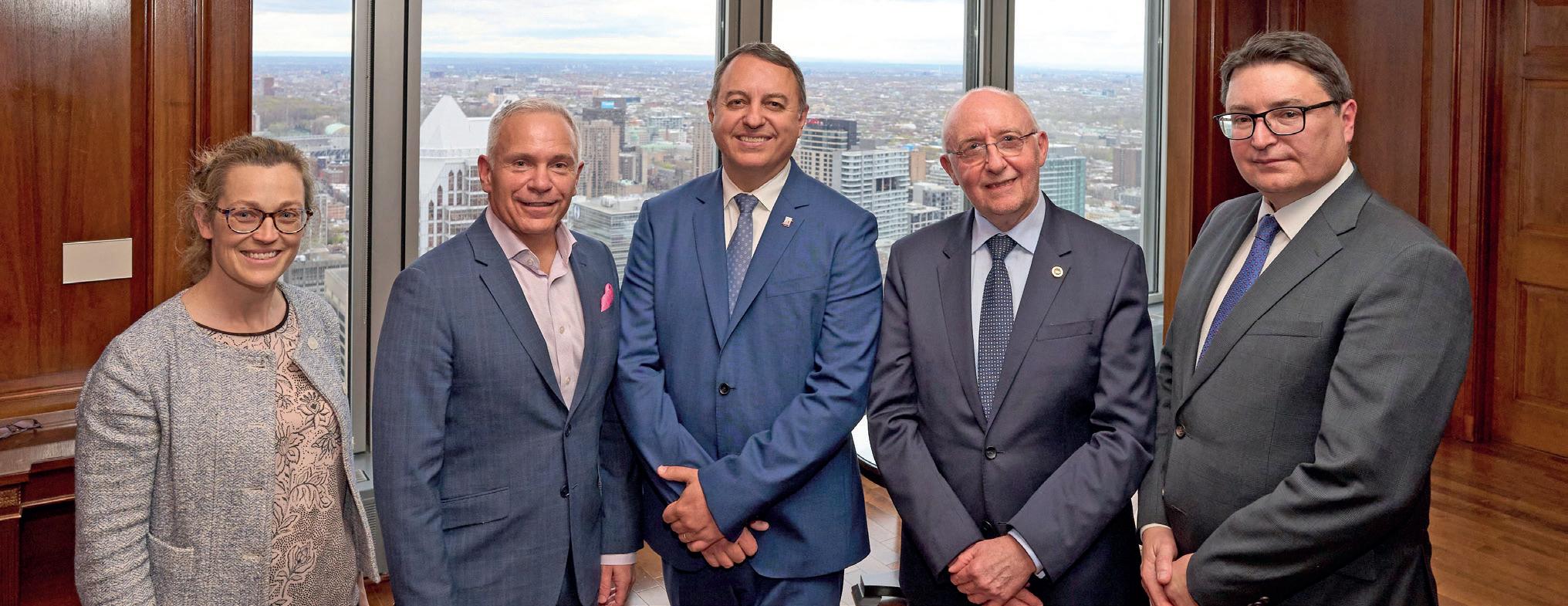
The plan sees continued investment in Montréal, the world capital of civil aviation, and in the sustainability of airports as essential enablers of economic growth and prosperity.
The Sustainability Expansion Plan strengthens ACI World’s sustainability initiatives that support its global airport membership in all disciplines of airport management and that align with the United Nations 2030 Agenda for Sustainable Development.
The plan also contributes to ACI World and its member airports’ commitment to reaching the aviation industry’s goal of net zero carbon emissions by 2050, supporting the sustainable growth of the sector and generating social and economic benefits for the communities it serves.
ACI World director general, Luis Felipe de Oliveira, noted: “The Sustainability Expansion Plan builds on a long-standing cooperation with Montréal International and its partners, the Government of Canada, the Government of Québec and the City of Montréal.
“The plan represents an important milestone in the strengthening of ACI World’s sustainability initiatives that support our global airport members.
“Despite the difficulties faced by the sector in the last few years, the expansion plan ensures our long-term commitment with Montréal and its position as the World Capital of Civil Aviation, providing employment and relevance to the whole aviation ecosystem."
Montréal International's CEO, Stéphane Paquet noted: “Since the 1940s, Montréal has been recognised worldwide as a hub for civil aviation. The city’s fame in this sector is due in large part to international organisations such as ACI World that develop cutting-edge programmes like the Sustainability Expansion Plan launched on May 5th.
“We ought to be proud and grateful for such initiatives that help build a green and inclusive economy and demonstrate Montréal’s international organisations’ leadership in decarbonising our planet.”
Streamlining resources for small and emerging airports
ACI World is streamlining its resources for small and emerging airports to foster their continued growth and sustainable development.
The move, which includes offering certain programmes and services at a lower rate, follows the ACI World Resolution ‘Support and assistance for small, emerging and regional airports’, approved at the 32nd World Annual General Assembly.
The resolution recognises the positive externalities and financial challenges of small and emerging airports. Furthermore, it calls on governments and industry to support their capital and human resource development plans and facilitate their transition to renewable energy.
According to the 2021 ACI Airport Economics Report, it is estimated that as much as 90% of the world’s airports are categorised as small (serving five million passengers or less per annum). Additionally, it is estimated that 68% of airports globally operate at a net loss and that 97% of those loss-making airports handle fewer than one million passengers per annum.
Nevertheless, despite these challenges, the viability of small and emerging airports remains crucial to the development of local and global connectivity, cohesion and territorial equality, social and economic development, as well as the potential for growth of their individual regions – in turn, supporting many of the United Nations Sustainable Development Goals.
“In many communities, small and emerging airports play a crucial role in the lives of millions of people – as employers, facilitators of tourism and trade, and even as key lifelines that support critical services,” noted ACI World director, Luis Felipe de Oliveira.
At its 18th Regional Assembly in Kobe, Japan, ACI Asia-Pacific made a resolution to promote, restore and develop air connectivity in AsiaPacific and the Middle East to ensure social and economic development as well as support the United Nations Sustainable Development Goals.
The resolution emphasises the importance of fully restoring and further developing air connectivity in the region, recognising the essential role that airports, driven by efficient and affordable air connectivity, can play in driving economic growth and social development.
Between 2019-2022, there has been a significant drop in the number of direct routes, flight frequencies and available seat capacity in Asia-Pacific as a result of the full-scale global COVID-19 transportation crisis.
By contrast, airports in the Middle East Region have recovered much faster, especially the large international airports.
Based on the preliminary findings of the ACI Asia-Pacific study on Airport Connectivity, conducted with the assistance of PwC, medium/ large airports in Asia-Pacific region, more largely dependent on international traffic, faced a 42% reduction in the connectivity index by August 2022, compared to a 17% reduction reported at small airports which benefited from a more resilient domestic traffic.
Airports in the Middle East, the other hand, have recovered much faster, with a 19% increase in connectivity at large/medium airports and 5% increase at small airports.
Recognising the circumstances in which airports are operating, characterised by increased airfares, reduced airlines’ competition and aviation ecosystem workforce, and significant resources required to finance the necessary modernisation of infrastructure, the ACI Asia-Pacific Board encourages airport operators to open a new dialogue with national authorities and industry stakeholders to modernise the aviation sector.
Commenting on the resolution, Emmanuel Menanteau, president of ACI Asia-Pacific, said: “Connectivity is a critical enabler for social and economic wealth.
“Restoring air connectivity in Asia-Pacific and development of more routes in the Middle East is essential to support the recovery of their economies. This resolution reaffirms the commitment of the airport community of Asia-Pacific and the Middle East to work together with national and regional authorities in an economically and environmentally sustainable manner for the benefit of passengers as well as local communities served by the airports.”

ACI EUROPE has renewed its call for the European Commission to bring the EU Airport Slot Regulation up to date.
In a letter from ACI EUROPE president and executive vice president of Aena, Javier Marín, to EU Transport Commissioner Vălean, the Commission was praised for its ambitious work to date in preparing the ground for a revision of the Regulation currently in place – which is 30 years old.
However, ACI EUROPE believes that the Commission must now take the next step and move forwards with a legislative proposal to future-proof the single aviation market.
The current EU Airport Slot Regulation is largely based on principles set by incumbent airlines for incumbent airlines, with airports having no say on the way their capacity is allocated and used. As such, the Regulation reflects an era that is no longer – when national airlines dominated and low cost carriers had yet to emerge, competition was scarce and airport capacity unconstrained.
The loopholes and deficiencies of the EU Airport Slot Regulation are now plain to see, according Marín.
He said: "Practices such as slot hoarding, overbidding, ‘doubledipping’, slot leasing, secondary trading and abuse of the New Entrant rule by multi-airline groups go against the spirit of the single aviation market by limiting competition, connectivity and consumer choice”.
As Europe accounts for more than half of the world’s most congested airports and as congestion is set to worsen since creating new airport capacity is ever more difficult, updating airport slot rules is fundamental to protect the integrity and well-functioning of the single aviation market.
This, says ACI EUROPE, is paramount to safeguard consumer interest and regional connectivity in the context of airline consolidation –through mergers, market exit or attrition.
The European airport industry is not calling for a revolution but for a legitimate, necessary and overdue evolution of airport slot rules, says ACI EUROPE. The full text of the letter sent to Transport Commissioner Vălean and also shared with Competition Commissioner Vestager can be found here.
2023
June 26-28
ACI EUROPE/ACI WORLD Annual General Assembly, Conference & Exhibition
Barcelona, Spain
2023
September 30-October 3
ACI North America Annual Conference & Exhibition Long Beach, CA, USA
2023
November 21-23
ACI Asia-Pacific, ACI EUROPE, and ACI World Airports Innovate Muscat, Oman
ACI World
Luis Felipe de Oliveira
Director General
PO Box 302
800 Rue du Square Victoria
Montreal, Quebec H4Z 1G8
Canada
Tel: +1 514 373 1200
Fax: +1 514 373 1201
aci@aci.aero
www.aci.aero
ACI Africa
Ali Tounsi
Secretary General
Casablanca, Morocco
Tel: +212 660 156 916 atounsi@aci-africa.aero www.aci-africa.aero
ACI Asia-Pacific
Stefano Baronci
Director General
Hong Kong SAR, China
Tel: +852 2180 9449
Fax: +852 2180 9462
info@aci-asiapac.aero
www.aci-asiapac.aero
ACI Europe
Olivier Jankovec
Director General
Brussels, Belgium
Tel: +32 (2) 552 0978
Fax: +32 (2) 502 5637 danielle.michel@aci-europe.org www.aci-europe.org
ACI Latin America & Caribbean
Rafael Echevarne
Director General
Panama City, Panama
Tel: +507 830 5657/58 info@aci-lac.aero www.aci-lac.aero
2023
September 4-7
ACI World Customer Experience Global Summit Incheon, South Korea
ACI North America
Kevin Burke
President & CEO
Washington DC, USA
Tel: +1 202 293 8500
Fax: +1 202 331 1362
postmaster@aci-na.org www.aci-na.org
Airports Council International (ACI), the trade association of the world’s airports, is a federated organisation comprising ACI World, ACI Africa, ACI Asia-Pacific, ACI EUROPE, ACI Latin America-Caribbean and ACI North America. In representing the best interests of airports during key phases of policy development, ACI makes a significant contribution toward ensuring a global air transport system that is safe, secure, efficient, and environmentally sustainable. As of January 2023, ACI serves 712 members, operating 1925 airports in 171 countries.
Solving complex challenges demands a special type of consultant – a consultant that captures the big picture without losing sight of the smallest detail.
Learn how our strategic vision, industry-focused expertise, and pre-decisional support services can help you address challenges.

www.ricondo.com

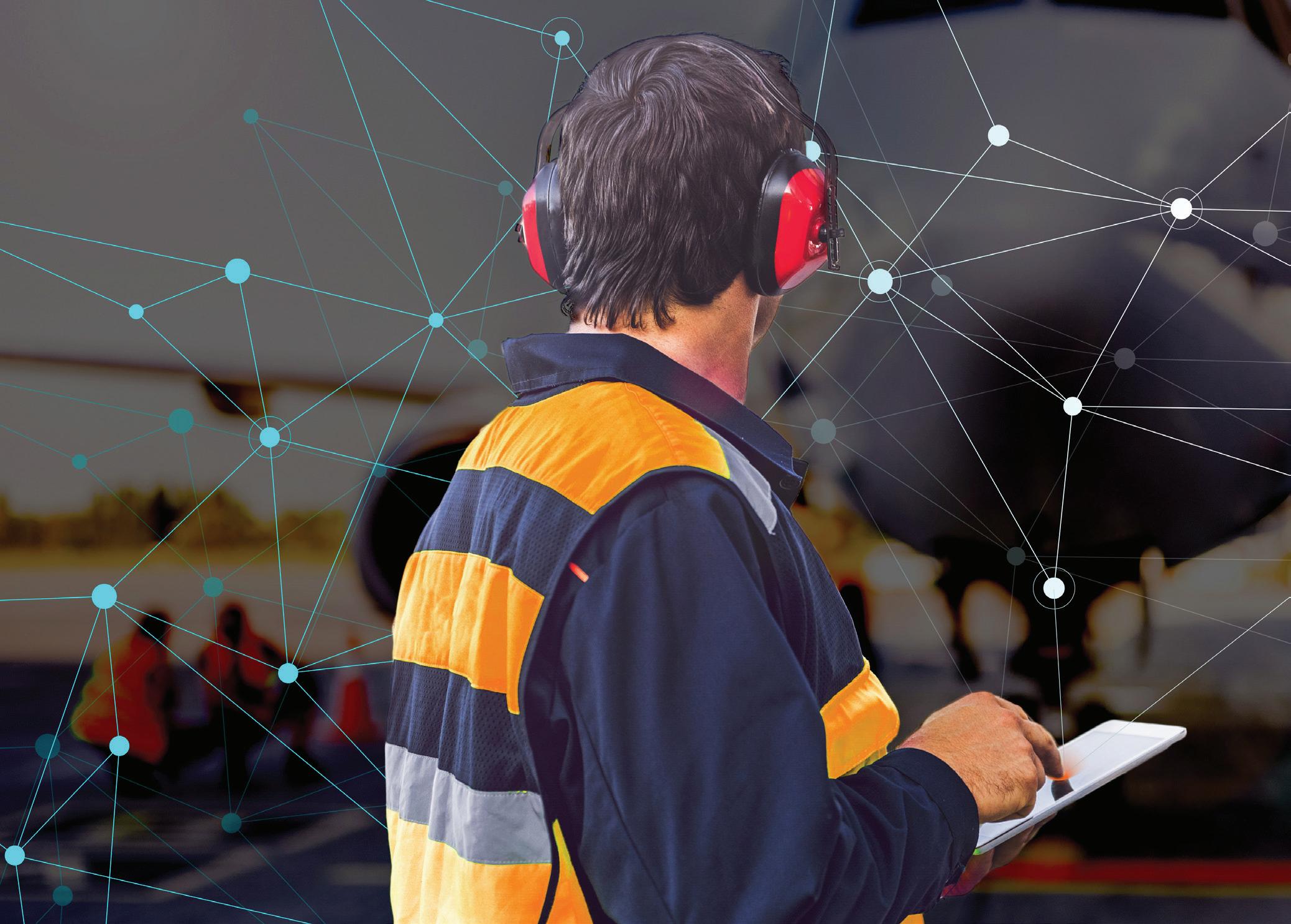
ADB SAFEGATE applies automation, integration and digitalization to provide an intelligent approach to managing apron activities from landing to takeoff. Our innovative Intelligent AiPRON platform integrates all the systems and processes important to apron operations into a single ecosystem that uses machine learning technologies to unleash the power of data and predictability.
Advanced docking systems ensure safe and precise aircraft stops every time, even in poor visibility. Operational data is constantly analyzed and presented to stakeholders in real time to improve decision making, mitigate irregularities and create recommendations to help deliver on-time departures. All of which equals faster, safer and greener turnarounds that boost the customer experience.
Barcelona's Josep Tarradellas Barcelona-El Prat Airport (BCN) is Spain's second biggest gateway after Adolfo Suárez MadridBarajas and the seventh busiest airport in Europe based on the 41.6 million passengers to pass through its facilities in 2022.
The reasons for its success are many. It is the gateway to Spain's second biggest city and the Catalonia region, one of the leading tourist destinations in Europe and a fast growing centre for new technologies, biomedical science and pharmaceuticals.
BCN also enjoys the status of being one of the world's best connected hubs for international traffic, according to OAG, which ranked it as the tenth best airport in Europe and 44th in the world in 2022 due to its enviable mix of routes across the continent and expanding list of long-haul services.
Vueling (40%), Ryanair (18%), easyJet (5%) and Iberia (4%) are the biggest airlines serving BCN today in terms of market share ensuring that the gateway offers some of the most competitively priced airfares for short-haul routes in Europe.
Air France, British Airways and Lufthansa are among the legacy carriers currently serving BCN, whose top 10 airlines between them operate non-stop services to many of the 146 destinations across Europe served from Barcelona.

American Airlines, Delta, United, Air Canada, Avianca, Asiana, Latam, Singapore Airlines, Korean Air and Air China are some of the carriers operating intercontinental flights to BCN from a total of 43 destinations across North Africa, the Middle East, Asia and North and South America.
Airport director, Sonia Corrochano, believes that the combination of BCN's extensive European route network and lower airfares compared to other hubs helps make the airport, and subsequently the city of Barcelona, one of most unique and attractive to visit in Europe.
"Barcelona is a fantastic city to visit and has regularly been voted one of the best places on earth to live and work in," enthuses Corrochano.
"Those unfamiliar with the city tend to only think about its appeal to tourists, but I always say that the success of the airport is also down to the success of the companies that are based here as much as tourism and the many different activities you can do here in the city and Catalonia in general”.
"The three business activities that are really developing here are biomedical sciences, information technology and telecommunications – being driven by Microsoft and a number of start-up technology companies – and pharmaceuticals. BCN's status as the most connected airport to other cities in Europe has proved pivotal to this growth."
Corrochano considers that having two large gateways in Spain (Madrid and Barcelona) is a strength for the country and a strength for the aeronautical sector.
MAD is Spain's busiest airport, of course, and BCN is the next biggest in terms of passenger numbers and aircraft movements, but Corrochano is keen to point out that both gateways complement each other and are key to the success of the country's entire airport system.
She is also quick to stress that Aena's strategy is to continue to enhance the facilities and route networks across all of its airports (see Aena's Spanish airport network section on pages 18/19) to offer the best possible service to passengers and the airlines.
Focusing on BCN, she is in no doubt that it will remain a top European hub going forward, particularly if it can further expand its long-haul route network.
"We are among the top 10 airports in Europe for connectivity and doing well, but if you look at all the other airports in the OAG rankings you’ll see that they are the main hub of their respective countries and the home of their legacy carriers, so it would be very difficult for Barcelona to overtake an airport like Amsterdam Schiphol or Paris Charles de Gaulle," says Corrochano.
"Air France is the dominant at Charles de Gaulle, for example. KLM accounts for most of the traffic at Amsterdam Schiphol and likewise British Airways and Iberia at London Heathrow and AS Madrid-Barajas respectively. We don’t have such an advantage, so the business model of JT Barcelona-El Prat Airport has to be built around attracting different types of carriers and offering our customers something different.”
Explaining a little more, she notes that BCN's biggest airline, Vueling, operates a comprehensive network across Europe from Barcelona in addition to flights to North Africa and the Middle East.
Indeed, the number of European destinations served by Vueling and other carriers from BCN makes the airport’s traffic mix different to the big hubs and, as a result, arguably makes the gateway easier and more convenient to use for passengers seeking short to mid-haul flights.
"Getting more long-haul routes is one of our goals,” admits Corrochano. “We serve Boston, New York, Los Angeles and San Francisco in the US today and Buenos Aires in Argentina and Santiago in Chile, but because we have no national flag carrier here such as a KLM or Air France, we have to work very hard to get them."
From a geographical perspective, Corrochano believes that people living in the Balearic Islands are more likely to want to travel to BCN to catch a long-haul flight because Barcelona is easy to get to for them, whereas those living within a 300-kilometre distance of Madrid would probably choose the capital due to the number of high-speed train connections to Adolfo Suárez Madrid-Barajas.
For the record, although low-cost carriers are the biggest operators at BCN, she doesn’t consider Vueling to be a traditional LCC, referring to it as "something more in the middle" between a low-cost and a legacy carrier.
She looks upon LEVEL in the same way as the airline, launched as a low-cost long-haul carrier in 2017, has a business model that allows passengers to pay for the services they want, ensuring that they can effectively fly as either a low-cost or legacy carrier passenger. Today it is responsible for a handful of the airport's international long-haul routes.
Vueling and LEVEL are, of course, also members of the International Airport Group (IAG), along with British Airways and Iberia, so can feed passengers into their long-haul networks from BCN via their London and Madrid flights respectively.
And the other way around, Vueling can offer extremely efficient connections for passengers willing to fly to Barcelona and catch onward flights to numerous mid and long-haul destinations.
"At Barcelona, passengers have a great choice of destinations and have the ability to only pay for the services they want on flights, which I think makes us different to the other airports in OAG's Top 10 International Megahubs for Europe," comments Corrochano.
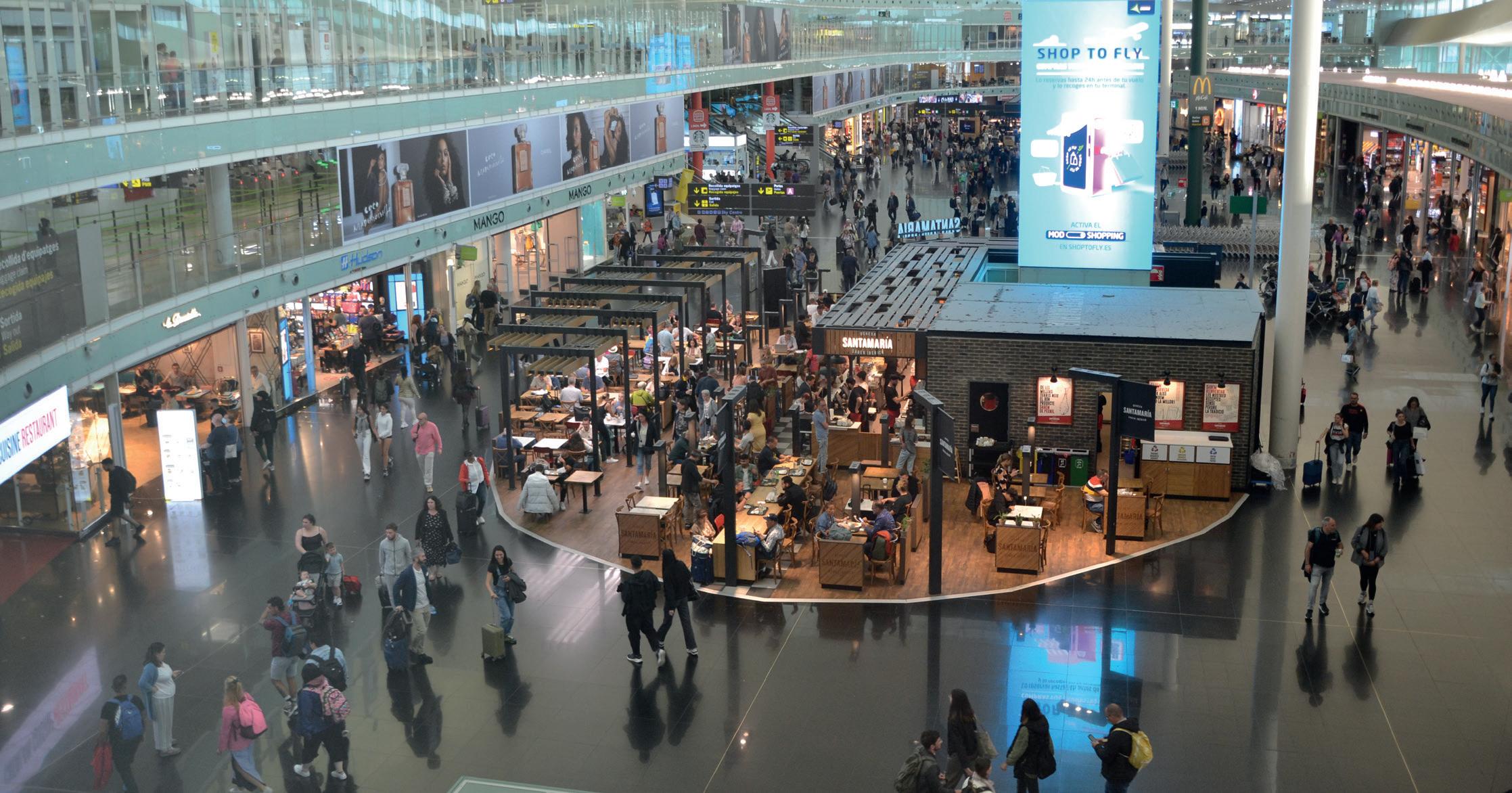
The 41.6 million passengers (79% of 2019 levels) handled at Josep Tarradellas Barcelona-El Prat Airport last year and the 9.9 million to use it in the first quarter of 2023 means that the Catalonian gateway is now firmly on track to match or better the 52.6 million it welcomed in 2019.
In fact, passenger numbers at BCN are already just 5% down on pre-pandemic levels and Corrochano is confident that if load factors remain high, a good summer and the return of Chinese travellers later in the year could lead to traffic numbers being close to pre-pandemic levels by the end of 2023.
She is nevertheless quick to point out that many airlines now operate very different route networks to the ones that they operated before the pandemic, citing easyJet's scaling back of services and Norwegian's decision to scrap long-haul flights altogether as examples of how the market has changed.
From BCN's perspective, it still lacks some routes and, on certain destinations, the frequencies it had before the pandemic, and Corrochano has no idea if they will ever return. However, new routes to Chicago, Calgary and Tel Aviv this year ensure that the airport continues to look forward to the future with optimism.
Today, domestic services accounts for 29% of BCN's traffic, European destinations for 60% and international traffic to North Africa, the Middle East, Asia, North and South America for 11%.
BCN currently has two terminals and three runways capable of handling up to 55 million passengers annually and 78 aircraft movements per hour.
Opened in 2009, Terminal T1 is equipped to accommodate up to 33mppa, while the older, Terminal T2, can welcome around 22 million and is split into three sections – Terminal 2A, 2B and 2C.
The airport has parallel runways and a 2,540-metre cross runway. The main parallel runways are used for take-off and landings during the day and the cross runway is used at night as it allows approaches from the sea that avoid flying over any neighbouring communities.
The future development of JT Barcelona-El Prat
BCN’s current capacity is fine for now, but with passenger traffic on the rise again and expected to exceed 55mppa within the next five years, operator, Aena, has drafted an expansion plan for the gateway.
BCN will seek to expand the parallel 'departures' runway nearest to the sea by 500 metres to 3,160m to allow it to handle flights to Santiago or Los Angeles and other long-haul destinations that currently have to take-off from the 3,352-metre-long 'arrivals' runway.
Aena believes that this development, which would allow the airport to handle up to 90 aircraft movements per hour, rising from 78, and a new satellite terminal and enhancements to Terminal 1 would effectively raise BCN's capacity to 70 million passengers per annum.
Talking about Terminal 1, Corrochano notes: "Areas that limit the capacity in the terminal right now are the security checkpoint and check-in areas, which would both have to be expanded and redesigned to ensure that we can keep up with demand."
She adds that new technology, both for processing passengers in the terminal and making better use of BCN's runways will also play a significant role in enhancing the operational capacity of the airport.
At BCN and across its airport network, for example, Corrochano says that Aena is actively working to introduce more biometric systems for passengers such as e-gates and self-bag drop technology that will ultimately pave the way for paperless, single-token journeys through its airports.
Outside of Spain, Aena's international subsidiary, Aena Internacional, has interests in 34 airports across Brazil, Colombia, Jamaica, Mexico and the UK.
In Brazil, through Aena Internacional, it holds a 30-year concession to operate and develop the airports of Recife, Maceió, Aracajú, Campina Grande, João Pessoa and Juazeiro do Norte in the north east of the country and will shortly begin managing São Paulo’s Congonhas Airport and 10 other airports across São Paulo, Mato Grosso do Sul, Minas Gerais and Pará states.
The ten airports comprise Campo Grande Airport; Uberlândia–Tenenete Coronel Aviador César Bombonato Airport; Maestro Wilson Fonseca Airport; João Corrêa da Rocha Airport; Mário Ribeiro Airport; Carajás Airport; Altamira Airport; Mario de Almeida Franco Airport; Corumbá Airport; and Ponta Porã International Airport.
When they officially join its portfolio of airports – Aena was awarded the concession to operate and develop them in August 2022 – its network of 17 Brazilian gateways will make Aena the biggest private airport operator in Brazil, and Corrochano says that the Board's recent announcement that the company will continue to look abroad for new revenue streams shows that its international ambitions remain high.
In the UK, Aena Internacional currently has a controlling 51% shareholding in London Luton Airport, which is the fifth busiest airport in its global network based on 2019 traffic figures, behind Málaga-Costa del Sol and ahead of Alicante-Elche.

In the Americas it has 37.89% and 50% stakes respectively in Colombia’s Cartagena de Indias (SACSA) and Cali Alfonso Bonilla Aragón (Aerocali) airports; and a 33.3% interest in Aeropuertos Mexicanos del Pacífico (AMP), which operates 12 Mexican gateways that include Tijuana, Guadalajara, Hermosillo, La Paz, San José de Cabo and Puerto Vallarta on behalf of Grupo Aeroportuario del Pacífico (GAP).
And in Jamaica, through AMP’s 17.4% stake in GAP, it has a controlling 74.5% interest in MBJ Airports Limited, which operates Sangster International Airport in Montego Bay, and holds a 25 year concession agreement for Kingston’s Norman Manley International Airport through GAP.
AeroCloud’s cloudnative intelligent airport management platform is modular, scaleable and easy to use.
Our CUPPS and CUSS solutions move passengers effortlessly through the airport.
AeroCloud Optic, our passenger track and count software, delivers accurate, real-time flow data from kerb to gate.

With this ultimate goal in mind, Aena has staged biometric pilot programmes with Air Europa, Vueling and Iberia and is now in the process of permanently implementing the new technology at BCN and other airports.
With regards to the airfield, new satellite technology utilised by Spanish air navigation service provider, ENAIRE, has paved the way for the introduction of a new departures system at BCN.
Called Brain II, it has redesigned departure flows at BCN by introducing a number of new flight paths for aircraft that are expected to increase operational efficiency and reduce noise disturbance to neighbouring communities.
The new system was introduced in April 2023 and is the second major change to the way aircraft operate at BCN after the decision to reduce the minimum separation distance between arriving aircraft to 2.5 nautical miles in a bid to maximise the efficiency of the airfield.
The decision, taken during the pandemic, requires every aircraft to exit the runway within 50 seconds by following the instructions of ATC staff who guide them to different runway exit points. A similar system is in operation at London Heathrow.
At BCN and across its Spanish airport network, Aena continues to innovate and introduce new retail and F&B concepts, the strategy at JT Barcelona-El Prat being to make sure that it has a healthy option of outlets as near as possible to the boarding gates.

This means that it wants the retail and F&B concepts to appeal to a variety of different tastes and budgets as well as reflect a sense of place and feature a number of brands that are familiar with international travellers.
Corrochano admits that changing retail habits globally with an ever-increasing number of consumers buying online, has convinced Aena to up its game and introduce facilities that add to the airport experience and perhaps offer something a little different, such as virtual reality technology, nail bars or the opportunity to play a piano or listen to some live music.
"It's all about enhancing the airport experience," enthuses Corrochano, who reveals that the airport recently introduced the possibility for passengers to create their own spaces and subsequently F&B experiences in the international VIP lounge.
The end of the pandemic means that the airport is now planning on resuming a number of sense-of-place initiatives that reflect seasonal events taking place in Barcelona city itself, such as the Sónar festival of dance music in June and collaborations with a local music school and the Gran Teatre del Liceu opera house.
"Events like these really show our connection with the city and leaves passengers in no doubt that they are in Barcelona," adds Corrochano.
In terms of more traditional shops and F&B outlets, Areas recently opened its Sibarium Delicatessen concept at BCN and Dufry and Rituals Cosmetics officially opened a store earlier this year.
Network wide, Aena recently awarded new duty management concessions for 23 airports spread across four regions to Dufry (Andalusia-Mediterranean), Canariensis (Canary Islands), Dufry (Balearic Islands) and Galicia, Asturias, Cantabria and Basque Coutry (Northern Spain).
Corrochano describes some of the proposed new innovations for the duty free shops at the airports in the above mentioned packages as "remarkable", stating that they will deliver top-quality service and confirm the attractiveness of the business.
With regard to Madrid and Catalonia, Aena has decided to launch a new tender process for the the duty free shops, with the same technical-financial conditions as before and, as a result, is inviting the 13 companies that previously expressed an interest in the contracts to submit new bids.
The expected turnover for the entire bidding process is €18 billion and includes 86 duty-free sales outlets across Aena's airport network, plus a large number of premises dedicated to other categories.
There's no disputing that Adolfo Suárez Madrid-Barajas (MAD), which handled 50.6 million passengers in 2022, and BCN are the jewels in the crown of state-owned Aena's 46 airports spread across mainland Spain and the Balearic and Canary Islands.
They are the biggest and best-connected airports in Spain, but their heavy reliance on the still recovering international market means that

they are now actually the only main airports in Aena's airport entire network whose passenger numbers have yet to reach pre-COVID levels.
In marked contrast, passenger numbers are booming at the popular tourist destinations of Alicante-Elche Miguel Hernández (ALC), Málaga-Costa del Sol (AGP), Valencia (VLC), Ibiza (IBZ), César ManriqueLanzarote (ACE), Menorca (MAH) Palma de Mallorca (PMI) and Tenerife Sur (TFS), which are already well above pre-pandemic levels.
In facts and figures, Aena's Spanish airports handled 77.4 million passengers in the first four months of 2023, 32.7% more than in the same period last year and 1.9% more than in the first four months of 2019.

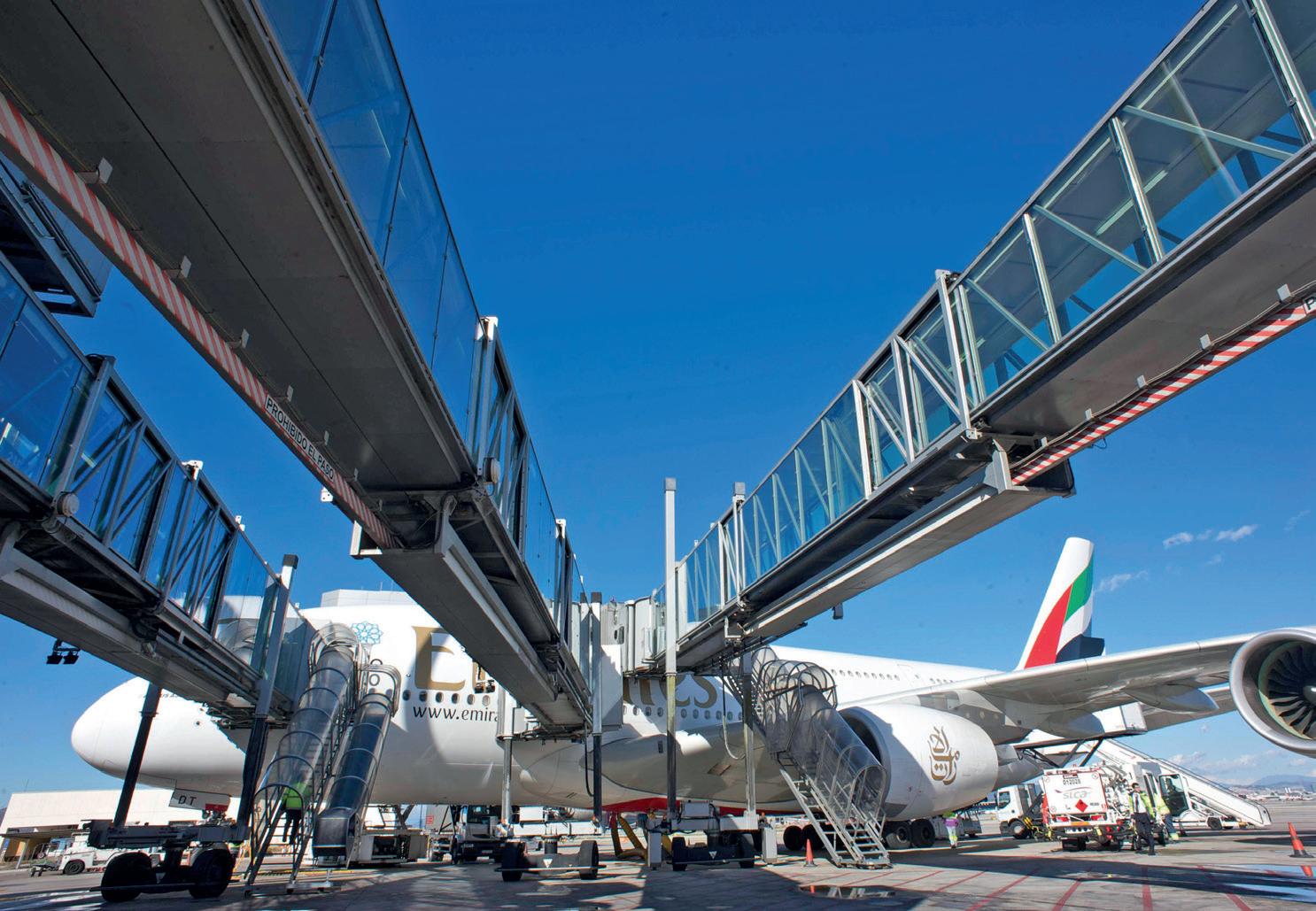
Between January and April, 695,549 aircraft movements were recorded (1.5% higher than in 2019) and 336,909 tonnes of cargo were transported, which represents 0.1% more compared to the same period of 2019.
Adolfo Suárez Madrid-Barajas Airport recorded the highest number of passengers in April 2023, handling 4.8 million, a 20.6% increase on the corresponding month in 2022 but still 3.6% down on April 2019.
The next busiest airports in April 2023 were Josep Tarradellas Barcelona-El Prat with 4.2 million passengers; Palma de Mallorca Airport (2.7 million); Málaga-Costa del Sol Airport (2 million); AlicanteElche Miguel Hernández (1.4 million), Gran Canaria (1.1 million); and Tenerife Sur (1 million).
Corrochano says: "Our airports are performing really well, which I think is the result of people just wanting to get away after the pandemic. Demand to the Balearic and Canary Islands, in particular, has been incredible."
Aena's Strategic Plan for the period 2022 to 2026 includes projects to enhance the capacity of a number of its Spanish gateways.
These include the expansion of Terminal 4 and its Satellite T4S at AS Madrid-Barajas and, of course, the upgrade of JT Barcelona-El Prat.
Aena is also looking at building more commercial developments at or around Barcelona, Malaga, Seville and Valencia airports for activities such as logistics, mobility and travel and data-driven
services in addition to more traditional facilities such as commercial offices and hotels.
It is worth noting that Aena has allocated 32 hectares of land at Adolfo Suárez Madrid-Barajas Airport for logistics usage, of which four hectares are earmarked for green space. Aena has also set aside a further 295 hectares at MAD for further development if required.
"These developments will boost our commercial revenues and hopefully attract new companies to establish headquarters at our airports, which in turn could increase our airline mix and boost passenger numbers," comments Corrochano.
Aena's Strategic Plan also outlines the key goals for the group over the next few years covering everything from financial objectives and innovation, technology and digitalisation to the sustainable development of its airports and the path to carbon neutrality.
In terms of sustainability, Aena's Climate Action Plan includes the commitment to developing solar power installations across its entire airport network as well as stepping up its water recycling efforts.
Aena is the first Spanish company and one of only a few in the world to report annually to its shareholders on the performance of its Climate Action Plan (CAP) as part of Aena’s sustainability strategy.
The CAP entails an investment of €550 million from 2021 to 2030 and its goals are ambitious. They include achieving carbon neutrality by 2026 and net zero emissions at all airports in its network by 2040 – 10 years earlier than the target set by the global aviation industry.
Integrated into its Climate Action Plan, Aena's Photovoltaic Plan aims to achieve the 100% supply of renewable energy to Aena's airports by 2026. The proposal is to produce 950 GWh/year of renewable energy per annum, which is equivalent to the consumption of 295,000 homes per year, and will require an investment of more than €350 million.
Aena believes that the plan is unique to the sector both in terms of the power provided by the solar panels and 720 hectare surface area they will cover, effectively making it a European leader in the production of renewable energy at airports.
The aviation industry is facing a significant new capacity challenge, and it's not due to infrastructure or system restrictions as previously, but due to the availability of workforce.

According to the latest ACI World forecasts, passenger traffic is expected to reach 19.3 billion passengers by 2041. The availability of a strong and diverse workforce to cater to and accommodate this future demand is critical for the industry.
The significant restrictions experienced on resource availability can have negative impacts on service quality, operational performance, and the aviation system’s capacity to meet expected growth profiles. These constraints can equate to economic losses for industry and local economies.
In addition to the ongoing resource and skills gap, the industry is equally grappling with issues related to diversity, equity, and inclusion (DEI). Women and minority groups remain underrepresented in many aviation fields; this lack of diversity can have negative consequences on the industry’s global performance and growth and limit its potential to provide positive and lasting socioeconomic benefits.
Staff and skills shortages are impacting the operations and performance of many industries on a global scale, including airports and the wider aviation ecosystem.
According to the Air Transport Action Group (ATAG), the aviation workforce contracted by 43%, equating to 4.8 million jobs globally, during the pandemic. New employees are difficult to find, as the priorities of many people have changed and competition to attract talent is fierce.
This is happening at a time when traffic is steadily progressing, potentially creating a widening gap that can cause important operational challenges, particularly during peak travel periods.
The industry needs to adopt a strategic and novel approach to workforce planning and development focusing on both short-term and long-term solutions. This includes investing time and energy into ensuring that aviation is an employment option of choice, developing training and education programmes, promoting DEI, fostering a positive work environment, and providing competitive compensation and benefits among the industry and its stakeholders.
By addressing the current challenges proactively and creating better awareness for potential aviation workers, the industry can build a workforce that is prepared to meet the expected future demand and continue to be driven by innovation and growth.
The aviation industry is a complex ecosystem, consisting of multiple players and processes, that requires the availability of a large and well-trained workforce. With 11.3 million jobs directly linked to the aviation sector, the workforce plays a crucial role in ensuring the safe and efficient operations across the entire aviation industry.
A large portion of these jobs, around 60%, take place at airports where a multitude of roles are needed to keep delivering the range of services required to make the aviation system function on a day-to-day basis across all regions of the world.
The instability of employment in aviation during the pandemic, generated by unpredictable traffic patterns due to the wide variety of health measures and travel restrictions implemented by States had a significant impact on aviation’s attractiveness as an employer.
In addition, the ongoing debate around the environmental sustainability of the aviation system has further impacted aviation as an optimal career path, particularly for the next generation of professionals. However, the wider changes and challenges are prompting the industry to rethink its employer brand, as its international and fast paced nature, and commitment to fight climate change, are features that can be highlighted to attract job seekers.
To ensure that the aviation workforce remains sustainable and appealing, industry stakeholders must prioritise investing in creating an attractive and positive work environment. Promoting actions, such as training and upskilling programmes that equip the workforce with the necessary skills and competencies for the future, or including DEI in recruitment strategies will go a long way in bringing in new talent from a diverse employment pool.
Many of the core aviation jobs are highly skilled professional roles that require significant amounts of investments to train candidates and bring them up to the required levels of skill and competence. These tend to be well-paid and highly sought-after roles but are not accessible to all individuals.
There is, however, a significant portion of aviation jobs that require lower levels of training and qualifications and may tend to have less job security and lower levels of remuneration, but that are equally as important for the industry.
These jobs, such as check-in and gate agents, baggage handlers, ground operations agents, airfield maintenance, and many more
found across the different sectors of activity, need to have equivalent terms and conditions to similar jobs in other sectors, and be recognised and understood for the critical support they provide to aviation as a whole.
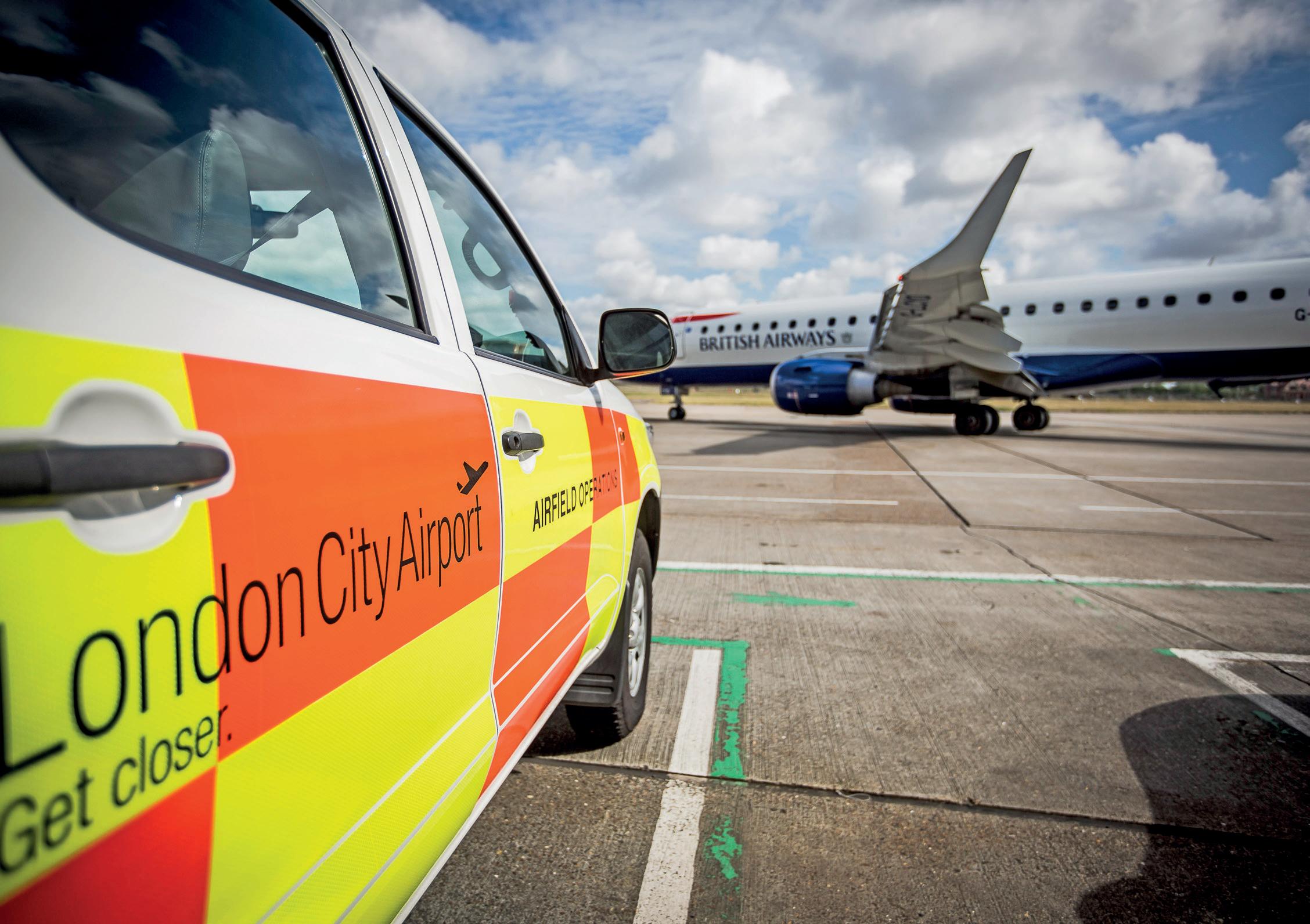
Throughout the pandemic, the industry has been affected by new concerns of employees around job security, fair pay, working conditions and equity of treatment. A range of strategies are needed in the future to retain employees already in the industry and keep cultivating an attractive industry for the future workforce. Some of the key considerations to achieve these goals are:
• Providing growth opportunities and career paths. Employees want to feel like they are learning and growing in their jobs. Having sufficient training and development opportunities to enhance employee’s skills and knowledge will allow them to become more effective in their current roles but also prepared for future career opportunities. ACI’s Global Training continues to be the world’s leading provider of airport management and operations education as it keeps pace with changes in the industry.
• Fostering a positive work environment. Creating a positive work environment in which the baseline culture values employees and their successes, ensures appropriate wellness measures are present, achieves a work-life balance, and seeks to meet social conditions, will help generate a positive work environment in which employees will thrive.
• Emphasise communication. Ensuring a sufficient level of transparency and communication on the organisation’s success and failures, on the state of the industry and any changes that may impact their jobs will develop trust and understanding.
• Create flexibility. Providing employees with appropriately tailored flexibility to their schedules or through other arrangements will help create an environment in which employees want to remain and grow.
• Offer competitive pay. Where possible, aligning pay scales with other sectors creates a more competitive and attractive workplace, reducing the rate of attrition and turnover.
The accelerated rate of innovation, introduction of new technologies, and automation are going to require new skills across the industry. Partnerships with universities or technical institutes can allow for and support the needed upskilling of the workforce.
In addition, the establishment of aviation programmes adapted to younger-age populations, such as high schools or pre-university schools, creates additional visibility and understanding of aviation for the next generation of talent. These types of partnerships between industry and education institutions, ideally supported by State policies, will grow the visibility of and generate interest in the industry and its appeal as a career path.
Reskilling can be costly. Incentives and support schemes from States may help offset some of the costs, but they should also be seen as an investment that will provide returns in the longer-term.
Pre-pandemic research from the World Economic Forum revealed that across a wide range of scenarios, investment in workforce reskilling and human capital development is a “no-regret action,” i.e., it will be a beneficial investment even in the absence of skills shortages. It also means giving staff the time to learn new skills. Some organisations have set aside a day of the week dedicated to learning and development.
As the workforce’s requirements and expectations continue to evolve and aviation professionals seek opportunities across different sectors or in different States, facilitating the workforce’s global mobility is becoming increasingly important. Mutual recognition of training certificates, industry designations, and validation of competencies across States, as well as accelerated security vetting processes will facilitate the integration of workers into new environments in a faster and more seamless manner.
DEI is vital for the aviation workforce as it is essential to ensure the industry is accessible to all individuals, regardless of their background or circumstances. The aviation industry should strive to attract a diverse range of employees, including individuals from underrepresented groups.
One of the primary benefits of prioritising DEI in the aviation industry is that it can help to create a more innovative and creative workforce. When employees come from diverse backgrounds, they bring a range of perspectives, ideas, and experiences to the table. This
diversity of thought can lead to more innovative solutions, better decision-making, and a stronger competitive advantage.
In addition to DEI, the aviation industry must focus on the labour needs of Generation Z. As the first generation to grow up entirely in the digital age, they have unique skills and perspectives that can benefit the aviation industry in many ways.

However, in order to bring this new generation into the industry, it is necessary to increase the visibility of the industry through partnerships systems and program schools as examples.
Increasing visibility of the industry, as a whole, is one of the first steps in improving the recruitment process, while also following the workforces’ evolving needs and adapting policies and ways of working to remain a relevant industry.
Indeed, Generation Z bring valuable skills to the aviation industry, such as high digital literacy needed for a variety of roles such as customer relations, communications and marketing, and cybersecurity. It is also the most diverse generation in history with a strong emphasis on inclusivity and acceptance of diverse cultures and background.
Their desire for flexibility is core to their work-life balance with an interest to work in environments that offer flexible work arrangements such as remote work, flexible hours, and job sharing. In various ways, the aviation industry is able to offer and provide such arrangements which can also help attract and retain talent.
This generation also values organisations that promote innovation, personal growth trajectories, and sustainability with a conscious approach to environmental protection. Promoting these core values across the industry, and communicating them effectively, should be prioritised to help with the recruitment of this generation.
Aviation is a resilient industry. Having faced multiple shocks over the last decades, from 9/11 to COVID-19, aviation has been able to recover, rebound, and come back stronger every time. The current shortages of staff and the operational challenges they are bringing to many airports worldwide present the industry with an opportunity to rethink and take strategic actions to correct its trajectory and build the workforce of the future.
These strategic actions should focus on three main axes: accelerating the introduction of technology, placing humans back in the centre of aviation, and creating an attractive aviation industry for present and future aviation personnel. These axes are not contradictory. Together, they can help bring about a better travel experience, more satisfied customers, happier and more engaged staff, and more efficient processes that will be essential to meet future traffic growth and ensure the long-term sustainability and resilience of the aviation ecosystem.
US$3,000 | Table top booth – includes 2 conference passes

The global pandemic may be officially over with the World Health Organization officially declaring that COVID-19 is no longer a "global health emergency", but its impact on the aviation industry can still be felt today in terms of yet-to-fully recover route networks, international travel and staffing levels at airports.
The latter issue is a concern for airports as many were forced to lay-off staff or make redundancies during the darkest days of the pandemic to avoid building up unsustainable debts, and some are finding it hard to attract new employees.
True, airports have been competing with other industries for staff for years, but back then aviation arguably had an edge over other industries because it was considered to be a reliable, fast growing and exciting industry to work in. COVID has, unfortunately, changed some of these perceptions, meaning that airports and their partners ranging from the airlines and security companies to retail and F&B operators are working extra hard to fill their job vacancies.
Without doubt, airport staffing issues came to fore this time last year when the shortfall in airport workers across the globe resulted in supply chain disruptions and cancelled flights as airports were unable to cope with the rapid rise in demand after the lifting of travel restrictions.
In 2021, the Air Transport Action Group's Aviation: Benefits Beyond Borders report revealed that the pandemic had led to the loss of 2.3 million jobs across the world's airports, airlines and civil aerospace groups – a 21% decline on pre-pandemic levels.
Indeed, the staffing difficulties experienced at Toronto Pearson (YYZ) and Sydney Airport (SYD) last year were touched upon by Deborah Flint, president and CEO of Greater Toronto Airports Authority, and Geoff
Culbert, the CEO of Sydney Airport, during the CEOs Panel discussion at last year's ACI Africa/World Annual General Assembly, Conference and Exhibition in Marrakech.
Regarding some of the well documented delays at airports due to new passenger processing requirements and insufficient staffing issues due to the rapid return of passenger numbers, GTAA's Flint noted that Toronto Pearson hadn't been immune from the problem, which was exacerbated by traveller levels at YYZ rising from 10% of 2019's levels back to pre-pandemic levels within the space of two months last summer.
It led to what she described as "a summer of frustration on behalf of passengers", made more challenging by an "exponential increase in processing times" due to the new health requirements. The situation, she believed, highlighted the importance of working together with different stakeholders to solve issues as well as the need to be more transparent and forthright with each other about the readiness and ability to perform their different roles.
While describing some of the resourcing difficulties Sydney Airport faced due to the rapid return of passengers, Culbert noted that the airport lost half of its 30,000 staff during the pandemic, but didn't feel confident enough to start recruiting replacements until Australia's borders opened up, which wasn't until January 2022.
Australia's strict COVID health regulations which required anyone coming into contact with an infected person to self-isolate, meant that on any given day 30% of the airport's existing workforce was off sick.
One positive to come out of the situation, said Culbert, was that it "drove a new level of collaboration between the airport and the airlines as we knew we had solve this together".
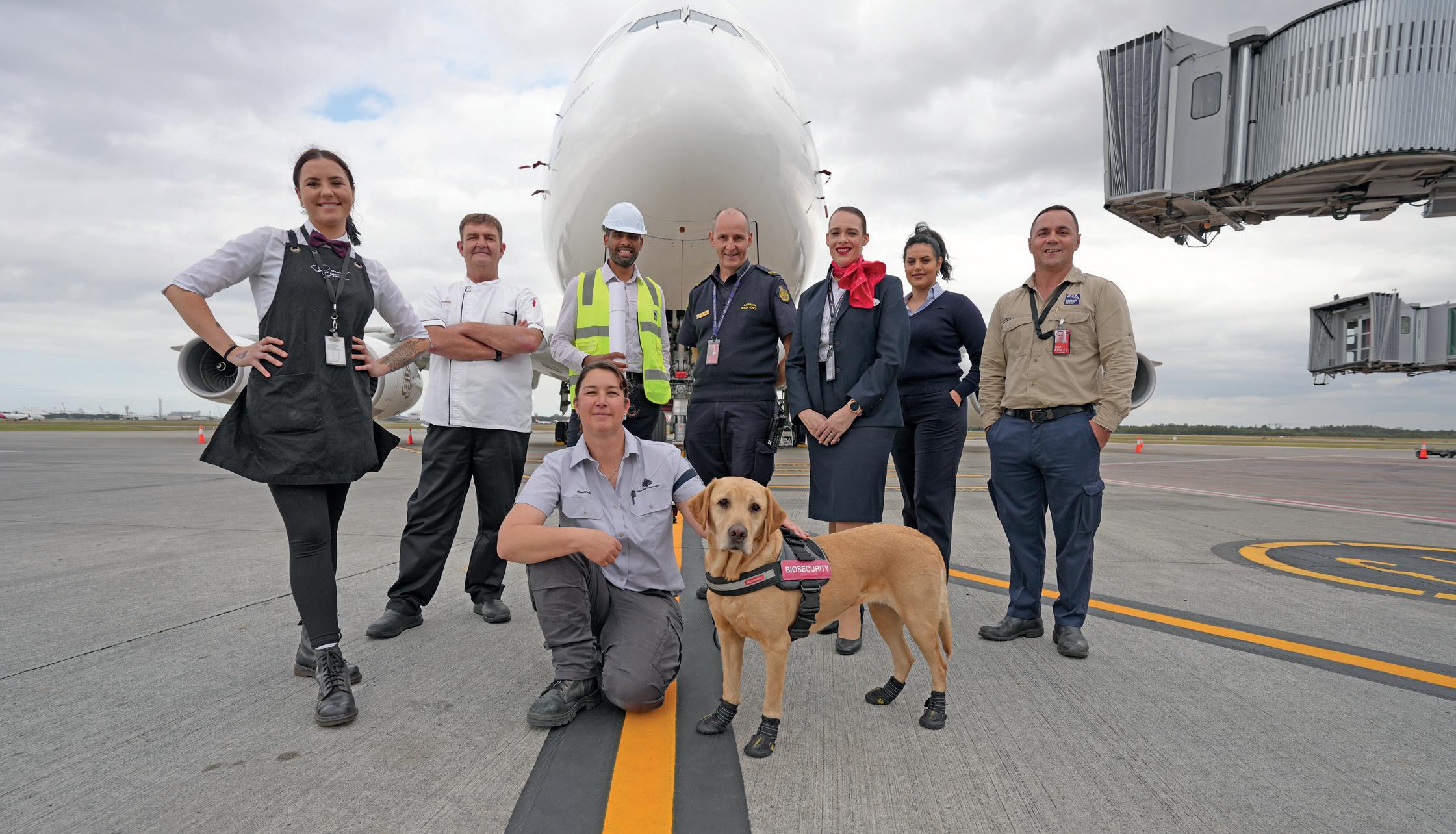
So how are the airports faring today? GTAA's Flint recently revealed that her airport was ready for a busy summer after hiring 130 new team members to bolster staffing in critical areas such as bussing, baggage handling and terminal operations.
This effort, she notes, complements the collaboration between Toronto Pearson and its partners to support their operations, including working alongside the airlines to balance their activities and resources during peak travel periods.
She says: “Last summer was challenging for passengers, and we have responded with a full suite of process improvements and practices with our partners to deliver a more customer-centric and reliable experience.
“Our new approaches includes more resources, transparency, and resiliency planning; as we are excited to welcome passengers for a robust summer travel in our improved airport environment.”
While in the last issue of Airport World, Sydney Airport's Culbert revealed that he had been delighted to see many workers who left aviation during the pandemic come back now that we’re flying again. He optimistically noted: "Once you have jet fuel in the blood, it’s hard to stay away."
Talking about the current staffing challenges facing Munich Airport (MUC) in Germany, CEO, Jost Lammers, says: "Like the entire aviation industry, Munich Airport is also facing a challenging staffing situation. Prior to the pandemic, we had around 9,500 employees. Currently, the workforce amounts to approximately 9,000 employees.
"It is important for us to mention that there were no lay-offs at Munich Airport during the pandemic as the reduction in the workforce was largely due to early-retirement programmes, voluntary leaver schemes and regular fluctuation.
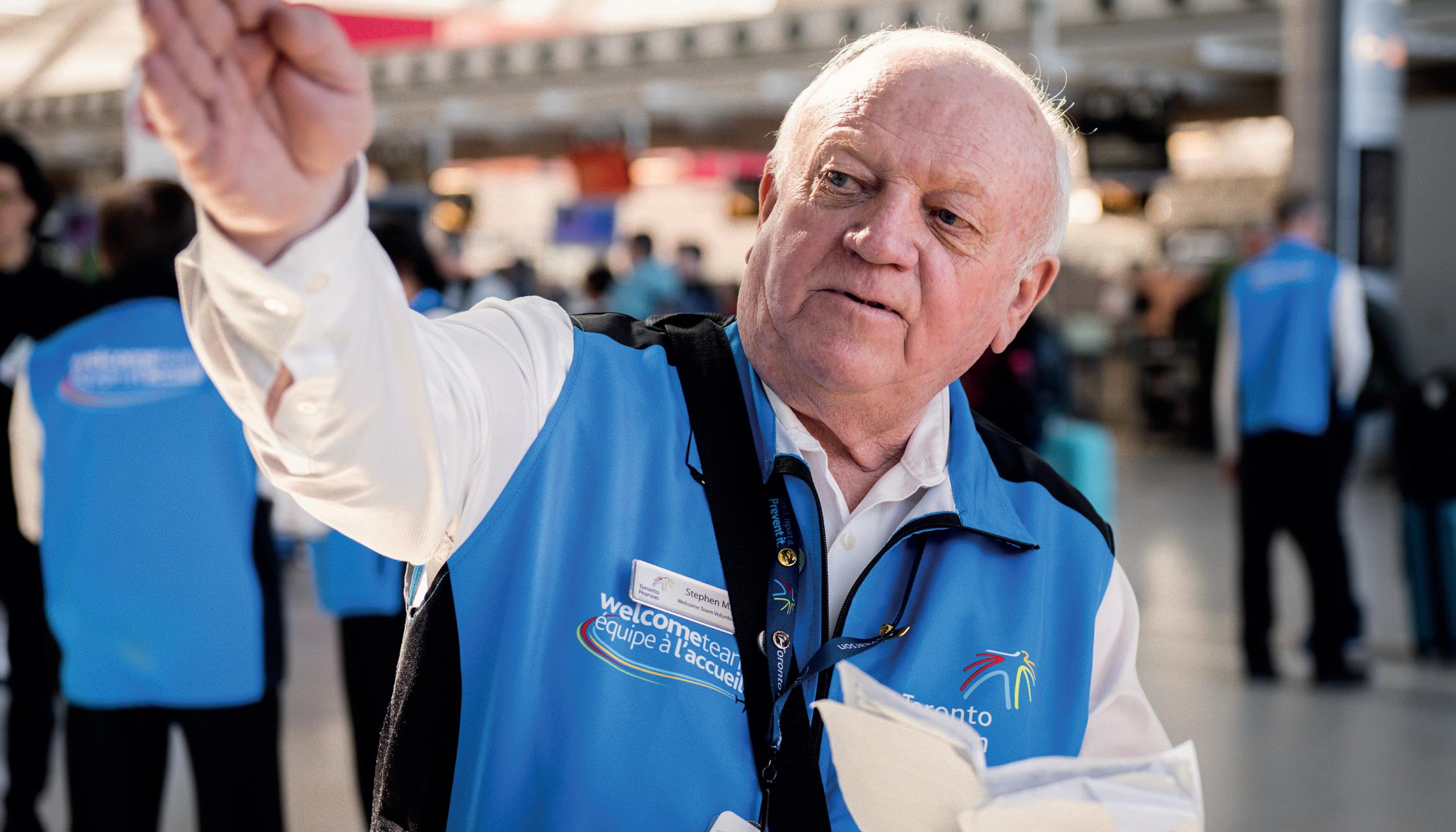
"At Munich Airport, the staff shortage only exists in a few subsidiaries and divisions. It is relevant in the operational and handling divisions as well as in the IT and technical units. Last summer, the strong upturn in traffic following the pandemic came more strongly than expected. It was a challenge for the aviation industry from an
operational perspective. Due to active recruitment measures, we are optimistic that our airport and all stakeholders are well positioned for the upcoming busy summer months."
In response to what actions MUC has taken to address its staff shortages, Lammers says: "We have developed a comprehensive recruiting strategy with powerful measures. Of course, we try to recruit from the local market in particular through actions such as social adverts, direct mailings, social media campaigns, posters and participation in job fairs.
"We also organise regular recruiting events in other EU and non-EU countries, co-operate with European airport partners and last, but not least, we have implemented an attractive compensation structure. These measures are showing success. The number of hires per month has increased significantly in the current year, and we expect a continuous monthly rise."
Sonia Corrochano, director of Josep Tarradellas Barcelona-El Prat Airport (BCN) in Spain, says the Spanish government's decision to provide extra funding for the tourism sector during the pandemic ensured that Aena and most of the airlines managed to hold onto their staff during the pandemic.
The support, which led to staff being paid by the government throughout the pandemic, meant that BCN and Aena's other airports managed to avoid the delays and disruption caused at many of Europe's airports last summer as they didn't have the staff to cope with the quicker than expected rise in demand to travel.
Corrochano, who points out that tourism accounts for around 8% of Spain's GDP, says: "Tourism is really important for Spain and, recognising this, the government introduced a mechanism to protect people's jobs by paying their wages until the industry recovered and operations resumed.
"This meant that our staff were on standby and ready to restart work when required, so we didn’t lose them to other industries and were quickly able to get back up to speed when flights resumed."
She adds that at BCN, all the terminals and runways were kept open and maintained throughout the pandemic so that it was ready and capable of resuming "normal operations" within 24 hours' notice.
Groupe ADP is pleased to note that neither Paris-Charles de Gaulle (CDG) or Paris-Orly (ORY) are currently experiencing staffing problems, which is good news ahead of what is expected to be a busy summer for the French capital's two main gateways.
What did Groupe ADP to address the staff shortages at its gateways? The airport operator notes: "If you take all the companies operating at our airports into account, there were around 4,000 vacancies at Paris-CDG and Orly in April 2022. Roughly 2,000 to 3,000 at Paris-CDG and around 1,000 at Orly. These figures corresponded to the employment needs for a typical summer season before the COVID crisis, so this would not normally have been a problem.
"The difference was in April 2022 we experienced sourcing issues we'd never experienced before, and these made the recruitment process much more difficult. We responded by using all the communication channels and networks at our disposal to inform the local employment services of the job opportunities at our airports and we increased our presence on a number of recruitment forums.
"Last year, for example, we launched 'Aerowork.fr', an innovative web platform for recruitment. This website centralises job offers from 30 companies operating at our Parisian airports, gathering 42 different areas of expertise (from luggage handling to security and reception).
"With 'Aerowork.fr', it's very simple: no CV, no photo, just a two-minute quiz that highlights the candidate's 'soft skills'. Once the candidate's key qualities have been identified, job offers are made, and the candidate applies. Within 72 hours, the candidate has either a job interview or a training proposal!
"This new website has proved very successful. Indeed, since the website was launched, almost 12,000 applications have been received, and 68% of candidates have been pre-selected for a job interview."
Groupe ADP adds: "In 2022, we recruited 533 people on permanent contracts and we are expecting the same level of recruitment in the current year. Within the Group, there are still a few difficulties in recruiting for technical jobs, such as cybersecurity and information systems experts. As regards all jobs across the airport ecosystem, we remain vigilant, but the situation is better than last year."
Do airports need to up their recruitment game to make themselves more appealing places to work for future generations?
The actions of Groupe ADP and MUC show that this is already happening, and these type of initiatives are likely to become more common in the future as airports face ever increasing competition from the private sector for both their leaders of tomorrow and the staff needed to keep everything running despite being in low-paid jobs that often involve working unsocial hours (i.e. overnight or early morning shifts).
MUC's Lammers notes: "Many airports, like Munich Airport, are already investing in HR and online marketing, recruitment processes and tools, as well as internal process improvements, and need to continue to do more.
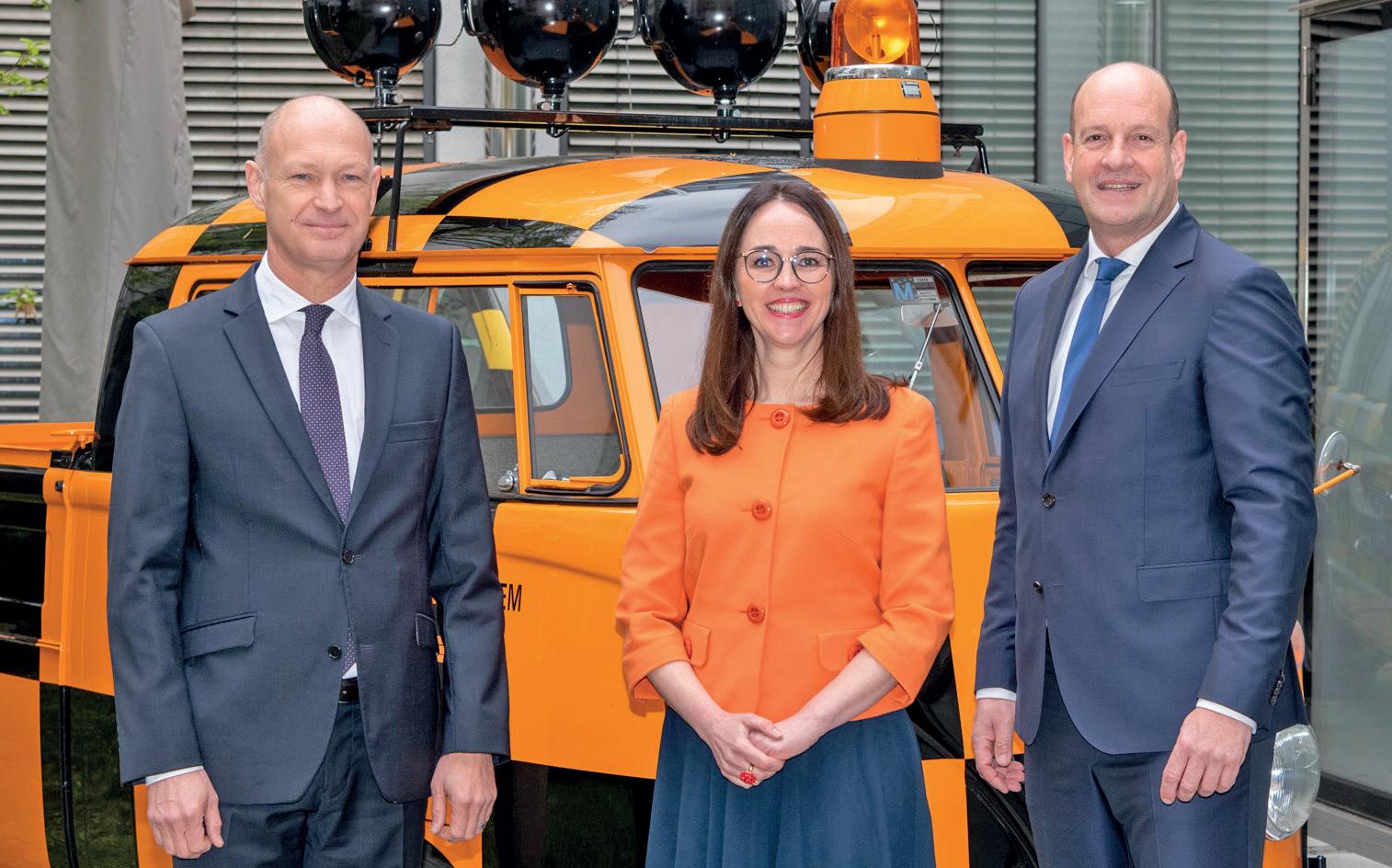
"With new work generations and changing work attitudes and expectations, airports that tend to be traditional in terms of culture and working conditions need to streamline and transform to achieve a modern and attractive work environment and culture.
"And it would definitely help the recruiting process if authority requirements and the security vetting of applicants were simplified, harmonised and accelerated."


MXD’s Chris LeTourneur highlights the many dimensions of Edmonton International Airport’s innovative economic and sustainable development initiatives.
As hosts of this year’s SMART Airports and Regions, Conference and Exhibition, Edmonton International Airport will be showing the world how it’s more than just an airport, it’s an innovative economically diversified Airport City Sustainability Campus.
Edmonton International Airport recently evolved its brand from EIA to YEG, leveraging the brand equity of its globally recognised IATA airport code. Using a social media scavenger hunt, YEG stimulated awareness of this rebranding by posting the YEG letters throughout the Edmonton Metropolitan Region.
Operated by Edmonton Airports Authority (EAA), YEG has optimised its 7,000 acres (2,800 hectares) of property not only to facilitate air connectivity and operations as an airport for everyone, but also to attract a diverse range of businesses generating significant employment and benefits for the Region.
YEG calls this land use and economic development framework its Airport City Sustainability Campus.
YEG is the Edmonton Metropolitan Region’s most significant economic anchor, connecting Edmonton and the Province of Alberta to the world.
Myron Keehn, YEG’s president and CEO, notes: “YEG is an economic engine for the Region and Alberta which is not only a place where passengers come and go, but a nexus of diversified economic activity connecting people, products and innovation.”
The important role of YEG is amplified by Malcom Bruce, CEO of Edmonton Global (the Edmonton Metropolitan Region’s Economic Development Authority). He says: “YEG plays a critical role in Port
Alberta – an inland port located in the Edmonton Metropolitan Region, where air, road, rail and pipelines converge to create an international cargo and logistics hub.”
Bruce notes that “YEG is a huge economic driver for Alberta and the Edmonton Region – stimulating economic growth and moving people, goods and ideas around the world.”
In terms of YEG’s economic diversification, Bruce says:“YEG is leading the charge in innovation by advancing the development of autonomous transportation – both in the air and on the ground.
“The airport is a critical enabler for many of the region’s sectors including renewable energy, hydrogen, clean technology, aerospace, life sciences, food and agriculture, and advanced manufacturing. As a leader in sustainability, YEG is demonstrating that Canada's path to net zero runs through the Edmonton region.”
A unique feature of YEG is its active participation attracting international companies while incubating local businesses. To do this, YEG not only views these companies as lease tenants, but as partners. With many of these businesses, YEG has established partnership structures whereby YEG is an active participant.
In 2021, YEG became the first airport in the world to join 'The Climate Pledge', committing to becoming carbon neutral by 2040. The Climate Pledge is an international initiative for organisations and operations who are committed to meeting the goals of the ‘Paris Agreement on Climate’ ten years ahead of schedule, and was created by Amazon and the environmental organisation ‘Global Optimism’, in 2019.
As part of The Climate Pledge, YEG is committed to three primary areas of action:
• Regular Reporting measuring greenhouse gas emissions.





















































• Carbon Elimination implementing decarbonisation strategies in line with the Paris Agreement through real business changes and innovations.
• Credible Offsets to neutralise any remaining emissions to achieve net zero annual carbon emissions by 2040.


As part of YEG’s dedication to sustainability, it has partnered with local and global companies to identify opportunities for reducing climate change emissions while facilitating sustainable innovation and economic development.
One of YEG’s most significant sustainability initiatives involves its leadership and participation in the Edmonton Region Hydrogen HUB.
Created by an alliance with government, indigenous, academic and economic development leaders, the Edmonton Region Hydrogen HUB launches the Edmonton Metropolitan Region’s hydrogen economy to ensure long-term economic competitiveness as the world shifts towards a low-carbon future to address climate change.
The HUB has stimulated 25 projects involving the production, transportation and end use of hydrogen, and carbon capture/storage, putting the Edmonton Metropolitan Region on a net-zero path and creating a sustainable green future for Alberta’s energy industry.
It also establishes the foundation for YEG and the Region to be global leaders in the production and export of low-carbon hydrogen, while serving as a blueprint for how other regions can leverage the hydrogen opportunity to build a Canada-wide hydrogen economy.
“YEG is a leader of the Edmonton Region Hydrogen HUB using its Airport City Sustainability Campus as a living laboratory and foundation for fostering innovation, new technologies and sustainable operations supporting the decarbonisation of transportation and logistics,” enthuses Keehn.
YEG is actively bringing together companies from around the world and locally to form partnerships, test new technologies and showcase the power of emissions-free hydrogen fuels.
In April 2022, it established a memoranda of understanding for partnerships with the following companies involved in green hydrogen technology and sustainable aviation fuels:
1. JOIN (Japan Overseas Infrastructure Investment Corporation for Transport & Urban Development, an arm of the Japanese Government)
Encouraging transportation, urban development and airport operations incorporating future mobility, autonomous systems, hydrogen, renewable energy, and cargo logistics development within YEG’s International Cargo Hub and Airport City Sustainability Campus for Japanese companies to pilot technology solutions facilitating international business.

2. Mitsui
Decarbonising transportation by piloting green and hydrogen technologies to explore opportunities in cargo and logistics, agri-business, food and retail distribution, serving as a demonstration hub of Mitsui’s technologies.
3. Letenda – Mitsui

Piloting, demonstrating and launching Letenda hydrogen buses in North America, with advanced manufacturing and assembly at YEG, establishing a Hydrogen Centre of Excellence to service parts distribution for Western Canada.
4. FirstElement Fuel (FEF)
Developing hydrogen infrastructure at YEG and in the Edmonton Metropolitan Region for decarbonising transportation with the goal of scaling the Hydrogen Hub model to other global airports and municipalities.
5. Toyota Canada
Launching hydrogen fuel cell vehicles (Toyota Mirai) for airport mobility, rental cars, taxis, and ride sharing, with the goal of decarbonising transportation and creating a Hydrogen Hub model that can be scaled.
8.









Piloting a facility for the SixRing process to produce SixRing SAF, one of the world’s cleanest drop-in aviation fuels, with a key input being hydrogen, and to partner with SixRing to scale this technology to other airports and transportation hubs.
Creating the world’s first airside dual fuel hydrogen fleet using Hydra’s technology to convert YEG’s fleet and specialised equipment, using YEG as launch point and demonstration hub for Hydra’s technologies, including evolving a dual fuel hydrogen armoured car fleet, decarbonising heavy duty trucking, and converting Hercules class 7 and 8 fleet vehicles to dual fuel hydrogen.
Piloting the launch of SBI’s technologies in modular hydrogen fuelling stations, commercial and retail fuelling options, sustainable aviation fuel, and biodiesel blend for servicing YEG’s fleet vehicles and equipment.
In May 2021, YEG and Air Canada entered a partnership to reduce carbon emissions and advance a green and sustainable aviation sector. This partnership aims to reduce the carbon impact of air travel with both organisations working together to test emerging green technologies at YEG’s Airport City Sustainability.
The YEG-Air Canada Sustainability Partnership focuses on initiatives that will promote a cleaner environment and include the following:
• Electrification of aviation equipment.

• Hydrogen fuel cell technologies.
• Green power generation using Airport City Solar.
• Development and use of sustainable aviation fuels, biofuels and hydrogen.
• Replacement of single-use plastics with plant-fibre materials.
• Drones for e-commerce and cargo delivery.
• Initiatives in agriculture and forestry to offset carbon emissions.
Keehn comments: “Finding partners who share YEG’s core values is critical. Air Canada is passionate about reducing its environmental impact and our partnership shows how airlines and airports can work together to promote a sustainable future.”
In May 2022, as part of the ‘Sustainable Flight Challenge’ involving 17 airlines, KLM Royal Dutch Airlines flew its first overseas passenger flight from Amsterdam to YEG 39% powered by a new sustainable aviation fuel. This Boeing 787-10 aircraft carried 2% less fuel but had 76 more passengers than normal, resulting in about 26 % less CO2 emissions per passenger.
In 2022, then CEO of KLM Royal Dutch Airlines, Pieter Elbers, stated: “KLM has operated to YEG for a couple of years, and has a very deep and close partnership with YEG. While talking to YEG we discovered we share the same values, ambitions, and drive to embrace sustainable aviation.”

The foundation for YEG’s innovation and sustainable economic development strategy is in establishing YEG as an Airport City Sustainability Campus, predicated on four pillars including Aviation & Technology, Distribution & Logistics, Sustainable Industrial Development and Destination Development.
A primary objective of the Airport City Sustainability Campus is to be a living laboratory for emerging smart technologies in aviation, transportation, autonomous air and ground mobility, artificial intelligence, green energy, agriculture, advanced manufacturing and emerging sectors.

Significant projects within YEG’s Airport City Sustainability Campus include:
• Airport City Solar Partnership with Alpin Sun to develop 340,000 photovoltaic solar panels over 600 acres, generating 110 MW of renewable
clean electricity annually, enough to power YEG, facilitate the future development of YEG’s International Cargo Hub and provide clean power to new developments on airport.
• International Cargo Hub
C$300+ million project involving a C$100 million grant from the Federal Government, as well as investment by YEG and the private sector, with development of 2,000 acres of land on YEG’s southwest lands, optimising the Port Alberta Foreign Trade Zone.
• Expansion of YEG’s Cargo Village
Expansion of YEG’s Cargo Village and Global Logistics Centre, with new temperature-controlled warehouses, and expanded Cargo Integrator area facilitating just-in-time logistics for e-commerce, distribution and agri-business, including a C$36 million expansion of YEG’s Apron 8 to respond to the 7% increase in cargo tonnage and 11% increase in freighter tonnage in 2022.
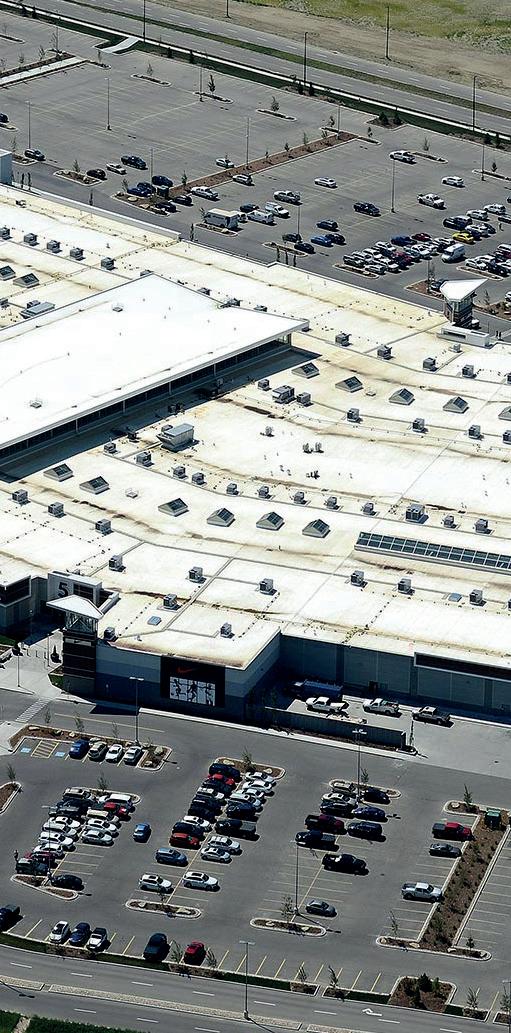
• Agri-Business
800,000 square foot indoor robotically operated greenhouse, in partnership with BEVO Farms Ltd, growing high value ornamental flowers with plans for vegetable propagation.
• Alberta Aerospace Technology Centre (AATC)
Established as a training hub at YEG, created in partnership with the Province of Alberta, Canadian North Airlines, Canadian Helicopters and YEG, housing Boeing 737 and helicopter training flight simulators, and has expanded into research and innovation, testing and advancing emerging technologies across key industry sectors.
• Destination Development:
– 340,000 square foot Premium Outlet Collection at YEG on 46 acres.

– Hotels and retail services including the YEG Marriott Renaissance and Fairfield Hotels.
– 100-Acre Century Mile Horse Racetrack and Casino.
– Redtail Landing Golf Club.
– 320-Acre Rad Torque Raceway motorsports park including NHRA dragstrip.
• Public and Foundational Services and Partnerships:
– STARS Air Ambulance airport urgent care clinic.
– Leduc County Firehall and Emergency Services Facility on 1.5 acres, opening in January 2024.
– Indigenous Box an Indigenous Women owned subscription box corporate gifting company.
– Wild and Pine facility growing tree seedlings in a bio-prism greenhouse developing net zero carbon capture through reforestation and site restoration.
With an annual economic output of over C$3.2 billion, YEG supports over 26,000 jobs, illustrating the success of YEG’s Airport City Sustainability Campus approach for diversifying the region’s economy, while leading technological innovation and supporting its sustainability pledge to become carbon neutral.
YEG’s many successful initiatives will be profiled at the forthcoming SMART Airports & Regions Conference and Exhibition in Edmonton from July 19-21. I hope you can attend and enjoy this exciting event!
Chris LeTourneur is president and CEO of MXD Development Strategists, co-chair of the ULI Airport Development Council and chair of the 2023 SMART Airports & Regions Conference and Exhibition in Edmonton.
The planned new megahub 40 kilometres southwest of Warsaw will help drive the economic development of Poland and Central and Eastern Europe, writes NACO's Lucas-Jan Ebels and Piet Ringersma.
Centralny Port Komunikacyjny (CPK) is a transport development project in Poland that is crucial for the economic growth of both the country and the wider European region. At its heart will be the largest airport in Poland and Central and Eastern Europe (CEE). However, it is much more than just an airport. It is a huge infrastructure project on an incredible scale that will quickly and efficiently integrate air, rail, and road transportation, connecting nearly 180 million inhabitants of Central and Eastern Europe.
Through its transport capabilities, CPK will also be of significant importance to Poland from a defence perspective.
The first and the most recognisable pillar is the planned international airport and multimodal hub for passenger and freight transport –located in the centre of Poland and connected with the country’s high-speed rail network.

The second pillar is the extension and modernisation of the country’s rail transport system. The CPK railway investment includes the construction of approximately 2,000 km of new high-speed railway lines, and several horizontal projects.
They will create seamless, fast, and interoperable travel between major cities in Poland and improve the connectivity in the CEE region, making it more competitive.
CPK will also provide a significant boost to freight traffic capacities in the region, playing a crucial role in improving connectivity and enhancing economic growth in the CEE region.
The third pillar is an airport city and eventually an aerotropolis –the future development of CPK’s surroundings. Thanks to the airport, and the country’s new public transportation system, the area surrounding the new gateway will be among the best-connected in Europe.
Talked about for decades, the new airport took a massive step closer to becoming reality in 2017 when the Polish government decided to back the project as part of its strategic investment in revolutionising the country's public transport system. It is believed that the massive project will transform the country’s transportation network and effectively connect Poland and the CEE region with the rest of Europe.
“The added value of this ambitious project lies in bringing together individual infrastructure projects related to air, road and rail transport into one unified infrastructure programme in order to
provide the biggest benefit for the transport system and for the economic development of the region," says Mikołaj Wild, CEO of CPK.
CPK's airport will create a new hub for Central and Eastern Europe whose route network will bring traffic and economic growth to Poland and its neighbouring countries, particularly from new long-haul destinations that have not traditionally been served non-stop from the region.
According to the latest IATA forecasts, air travel in Poland will return to its pre-pandemic levels by the end of 2024.
In 2019, Poland's largest gateway, Warsaw Chopin Airport, served close to 19 million passengers – three million less than its design capacity of approximately 22 million passengers per annum.
If the current post-pandemic traffic recovery continues, Warsaw Chopin Airport is expected to reach its capacity in the next few years, and with little opportunity for further expansion due to its location, the Polish government is aware that it will need to create capacity elsewhere.
According to IATA forecasts, the new CPK Airport is expected to serve approximately 30 million passengers in the first full year of operations, and 40 million annually by 2035.
The CPK project is designed to elevate Poland's transport system and reduce transport exclusion as, amazingly, there are still some towns in the country with a population of over 50,000 residents that lack railway access.
The new rail network aims to connect the country’s major cities to CPK and Poland's capital city, Warsaw, within 2.5 hours, ensuring that CPK will serve as a convenient gateway for international travel.
“CPK is not just a strategic infrastructure project for Poland, but also a major integrator of the CEE region," says Wild.
"We believe that the CPK project, with its multimodality, will significantly boost connectivity in the CEE region, especially along the North-South axis. Together with regional initiatives like Rail Baltica, the Czech HSR Program, and V-4 High Speed Rail project, CPK will deliver a new, dense, and interoperable transportation network across the region.
“It means that CPK is not alone in the efforts. By co-operating at all levels with these sister projects, CPK is already taking shape as a cross-border initiative that will bring the CEE region closer together."
Importantly, the planned network of new railway lines fall within the sustainability and smart mobility strategy adopted by the European Commission and will therefore be compliant with the European Green Deal.
Although dedicated to civil aviation, CPK has been recognised by the former commander of US Army forces in Europe General, Ben Hodges, for its unmatched capability and capacity in Eastern Europe.
The project improves the region’s security by enabling smooth transfer of military units, equipment, goods, and aid through appropriate transport capabilities.
“Despite its ‘civilian nature’, the CPK is also of significant importance from the point of view of our country’s and Europe’s defence," notes Marcin Horała, Poland’s Secretary of State and Government Plenipotentiary for the CPK project.
"Of course, it will not be a military base, but nevertheless an extremely important part of NATO’s eastern flank – If only due to a significant increase of military mobility”.
system
Given that the investment consists of designing a greenfield airport, the CPK is the best opportunity to implement the most innovative solutions.
NACO, a global leader in aviation consultancy, is supporting the development of those solutions as part of the Master Architect Team led by Foster + Partners, which have over 40 years of experience designing infrastructure and transport-orientated projects, from Hong Kong and Beijing airports to Stockholm Central Station.
The vision for the new CPK Airport finds a balance between operational efficiency, environmental responsibility and symbolic expression.
Foster + Partners are providing architectural and engineering services with support from Buro Happold.
Grant Brooker, head of studio at Foster + Partners, says: “We are proud and excited to be chosen by CPK as the designers of this project. In collaboration, we will work together to create a model for the future of totally integrated transportation design.
"We believe that this project will completely revolutionise travel across the country and beyond.
"The vision of woven architectural form is deliberately and strongly expressed. It could shape the building and guide the passengers through its spaces, while also serving as a powerful symbolic reference to Poland’s rich cultural heritage and the united strength of its people.”
Leading experts in the development of intermodal transportation will serve the project with a holistic approach to terminal and rail station planning.
The design of wayfinding, landside-airside co-ordination, baggage handling, security and special airport systems, and more – will all be connected to ensure an excellent passenger experience.
“Intermodal, sustainable, innovative – that’s the future of transport we’re working on. We’re proud to bring our aviation expertise to the project," says NACO director, Esther Kromhout.
"Together with our partners we’ll put seamless connectivity and passenger-centricity at the heart of CPK."
The Polish government is determined that the new airport is a 'smart airport', being equipped with the most modern, passenger friendly technologies that ensure quick and easy journeys through its facilities.
As a result, the consortium responsible for its design is developing a number of green, environmentally friendly, intelligent solutions for the gateway.
Alongside CPK’s representatives, they are working on, among other things, developing sustainable solutions for biofuel and introducing electromobility across the airport campus.
Lucas-Jan Ebels is a senior project manager with NACO and colleague, Piet Ringersma, is a senior airport architect.
Aerotropolis concept creator, Dr John Kasarda, explains why certain hubs prosper and describes what it takes to become a world-class air logistics hub.
Afrequent question asked by executives of larger commercial airports and their surrounding jurisdictions is, what can we do to become a major air logistics hub?
They ask this question because air logistics serves as the go-to mobility resource for today’s high-tech and advanced manufacturing value chains and to meet the expanding demands of our must-have-it-now e-consumer population.

Their desire reflects reality: Airport regions anchored by major air logistics hubs are more economically competitive and often the preferred location for firms in modern industrial growth sectors such as aerospace, biopharmaceuticals and medical devices, cross-border e-commerce, new energy and intelligent vehicle components, and smart electronics along with premium fresh foods and other high-value perishables.
Aerotropolis Institute China fellows Michael Canon, Ram Menen, and I have been studying the aviation networks, multimodal surface infrastructure, cargo handling facilities and operations, new technology applications, Customs, regulatory environments, regional industry mix, and related factors underlying the growth and competitive advantages of many of the most prosperous global air logistics hubs.
These include, among others, Hong Kong (HKG), Singapore Changi (SIN), Memphis (MEM), Dubai (DXB and DWC), Amsterdam Schiphol (AMS), Frankfurt (FRA), and Paris Charles de Gaulle (CDG), as well as European mid-sized airports that have evolved into thriving
international logistics centres such as Brussels (BRU), Liege (LGG), Leipzig/Halle (LEJ), and Luxembourg (LUX).
While each of these successful hubs has unique features, I synthesise below common characteristics that make them flourish.
The primary engine of a global air logistics hub is not the airport per se, but its aviation network including the types of aircraft utilised.
The ideal hub possesses the right mix of widebody passenger and all-cargo aircraft operations bolstered by an international hub airline that provides it with expansive, high-density routes often supported by regional road feeder services (RFS).
All major air logistics hubs possess extensive international air routes with Hong Kong, Singapore Changi, Dubai, Amsterdam, Frankfurt, and Paris CDG relying heavily on daily scheduled widebody passenger aircraft whose bellies carry over 50 % of the airport’s cargo.
International widebody passenger aircraft not only generate considerable direct cargo lift on a more frequent schedule than air freighters; they also offer the airport’s cargo and express airlines additional on-demand capacity, agility, and market reach by providing them with belly space options through inter-airline agreements.
Greater volumes of belly cargo, in turn, make more international passenger aircraft flights financially feasible by providing them with a
margin of profitability, thus contributing to airport route expansion. Traditionally averaging 13% of major international passenger airline revenues, cargo revenues were double that percentage in COVIDimpacted 2021 and 2022.
Belly cargo likewise contributes to the competitiveness of the airport and its outlying regions by offering more economical rates.
Total air logistics costs are lowest at global gateways with extensive non-stop routes served by widebody aircraft, enabling freight forwarders to consolidate broader regional cargo for lower unit shipping rates while minimising temporal and other costs of further cargo transfers among aircraft.
International route expansion at some hubs has been accelerated by an ‘Open Skies’ policy, with Dubai the exemplar. Open Skies essentially allow a foreign airline to serve the airport, as long as appropriate slots are available, and the market sustains the flight.
Since most hub airports are dominated by national flag carriers which tend to be highly protective of their passenger market, commencing with Open Skies for cargo-only aircraft, as India demonstrates, can be a fruitful first step.
Acquiring international ‘Freedoms of the Air’ through bilateral and multilateral agreements has proven essential to the success of many of the largest global air logistics hubs. These include 5th, 7th, 8th and 9th Freedom Rights, the last three being particularly important for international air express airlines such as FedEx, UPS and DHL to establish a foreign regional hub at the airport.
Several of the top global air logistics hubs offer international express and cargo airlines 7th Freedom Rights which have proven instrumental to their establishment of foreign regional hubs. These 7th Freedom Rights permit airlines serving a foreign airport to feed cargo to and from it via other foreign countries without having to connect to their home countries.
For airports in large, geographically expansive countries, extending 9th Freedom Rights to an international express airline to further connect its aircraft to other domestic airports increases the appeal of the airport to become a foreign regional hub by the likes of FedEx, UPS or DHL.
To operate a foreign hub, these express airlines usually require ‘change of gauge rights’, as well, in order to transfer cargo between their long-haul widebody and short-haul narrowbody aircraft for smaller, more dispersed shipments. Even here, though, national regulations can impact logistics system efficiency by requiring international air express operators to subcontract with local firms such as ASL in Europe and Blue Dart in India for first and last-mile delivery.
Many hubs permit airline ownership and operation of cargo terminals. For example, all the freight terminals at HKG, the world’s busiest cargo airport, are privately owned and operated while self-handling of cargo is desired (or required) by integrator express and some general cargo airlines.

Whereas aviation networks are the primary driver of air logistics hubs, the battle for air cargo is ultimately won on the ground. Even in the fast-paced integrator/air express sector, on average less than 15% of the time consumed in door-to-door air cargo shipments is airborne, while international general air cargo still takes an average of six days from shipper to consignee.
Top global air logistics hubs are distinguished by the speed, agility, security, and predictability of cargo ground handling. They feature stateof-the-art, fully automated freight terminals, the highest quality cool chain, and other temperature control facilities and equipment.
They also boast express Customs clearance including preclearance of cargo prior to aircraft landing, minimum dwell time for RFS and in-transit cargo, expertise in handling out-size cargo, live animals, and
consumer valuables, have a cloud-based air cargo community systems that provide for the real-time secure exchange of information and data to all stakeholders along the entire air cargo chain, and paperless single-window electronic declaration of imports and exports that go instantly to all pertinent government agencies.
The most innovative air logistics hubs are taking digitisation a revolutionary leap forward by introducing AI technologies and predictive analytics for real-time space and pricing optimisation and to reduce the risk of cargo facility overbooking or underutilisation.
AI further allows logistics operators to move well beyond track and trace cargo chain visibility into the realm of simulation and control of the entire cargo chain, providing solutions for any forecasted cargo chain disruption and even preventing the disruption from occurring.
Well-trained airport technical staff service these functions. This includes monitoring digitised sensors that provide a central control unit with the status and conditions of the airport’s cargo 24/7.
Not surprisingly, all leading air logistics hubs score high on World Bank Logistics Performance Index measures (see the World Bank’s Connecting to Compete report for 2023). This is especially so for Customs performance, which exhibits a strong positive correlation with on-time delivery of international shipments. Logistics hub performance is typically best where Customs officers and border control agents act as facilitators of trade rather than as policemen.
Fast and seamless intermodal cargo transfers are likewise features of top air logistics hubs. Some such as AMS, HKG, SIN, DXB, MEM and LGG are quadrimodal, meaning that they effectively integrate air, highway, rail, and waterborne transit modes for competitive advantage.
Dubai provides a rich lesson on how to enhance air cargo flows across different modal infrastructures. The emirate’s government established bonded highway freight corridors among its two airports (DXB and DWC), Jebel Ali seaport, and its land ports creating multimodal efficiencies that accelerated logistics hub growth.
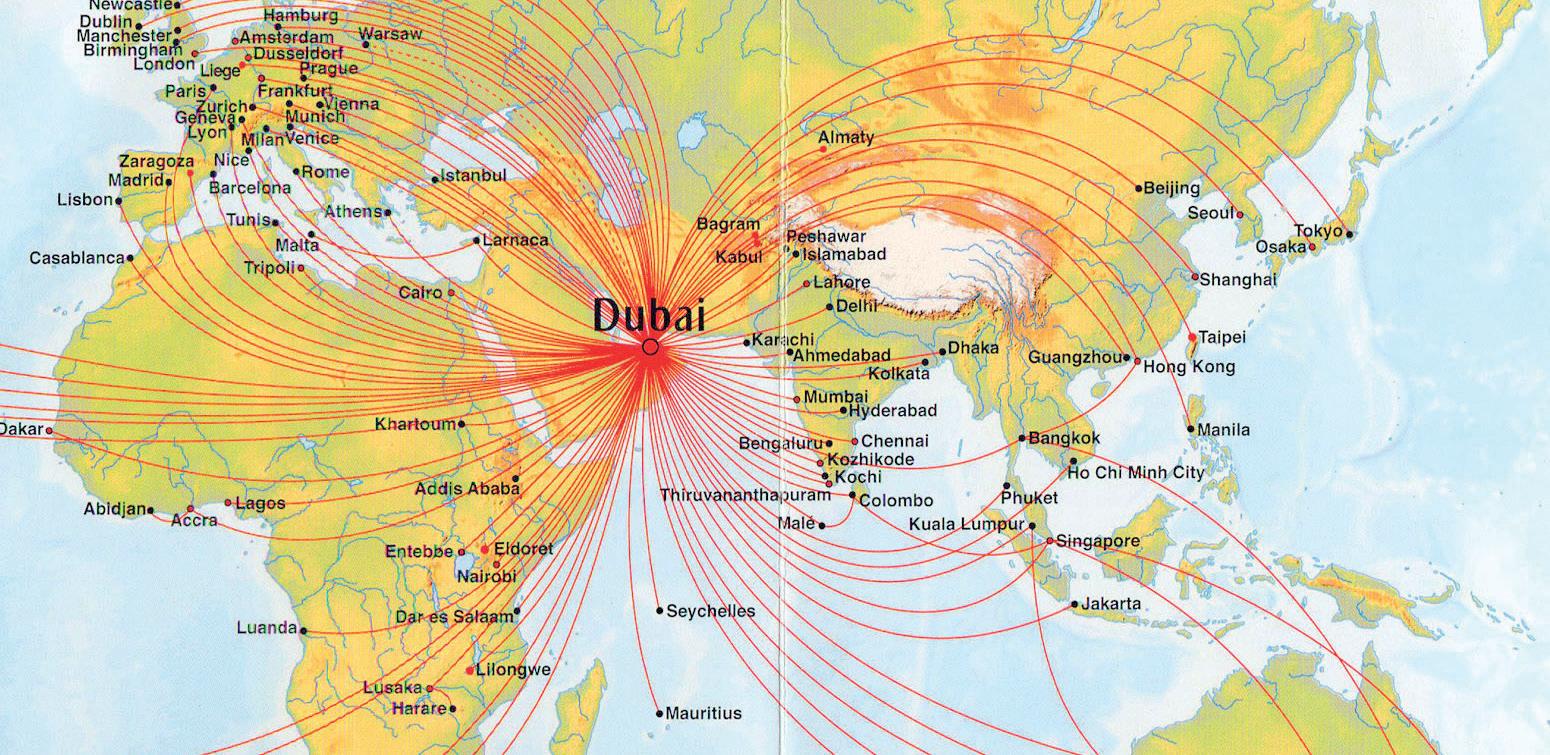
Most of the world’s leading air logistics hubs are efficiently linked to thriving inland ports that receive and ship substantial cargo via rail and truck. Several of these provide the complete set of ‘freight village’ features including rail/truck intermodal interfaces, warehouses,
fulfilment centres, parts distribution, light manufacturing and assembly, free-trade zones, Customs operations, truck maintenance, hotels, restaurants, and leisure/rest venues.
The most effective global air logistics hubs speed up international commerce and trade through Fintech and the free movement of major international currencies. They also provide an attractive business environment for freight forwarders and third-party logistics providers (3PLs).
While the beneficial owners of cargo are the shippers (e.g. manufacturers) and consignees, forwarders and 3PLs are instrumental in connecting them, including selecting the airport and airline for payload transit. This selection plays a critical role in an airport region’s air cargo leakage via trucking to more distant competitor airports.
Looking to the near future, specialised high-speed cargo trains are on the horizon. China, for example, has already developed a prototype high-speed cargo train that it said to be capable of carrying up to 110 tonnes of goods while traveling at speeds of around 350 kilometres per hour.
An express package and e-commerce logistics park is being designed adjacent to the large high-speed rail station in the Zhengzhou Airport Economy Zone, which will be connected to the airport’s cargo areas six kilometres away. Plans are also underway for a 400 squarekilometre ‘Oriental Aerotropolis’ in Shanghai, the project being driven by Shanghai Pudong Airport (PVG) and the new high-speed rail station under construction nearby.
In Europe, airport high-speed rail cargo synergies are being pursued at Paris CDG. Known as EuroCarex, France's TGV system will be connected to those of other Western Europe nations to carry air pallets/ containers to main European airports and express hubs on distances between 300km and 800km. Opportunities and challenges to be overcome are part of ongoing feasibility studies.
The future is already here for drone cargo delivery. Airport management must consider thinking about the safe and efficient integration of drones into their air cargo areas and providing locations for next-generation aircraft such as eVTOL, avoiding any conflicts with the airport’s crew-operated commercial aircraft.
New modes of air transport plus rapidly evolving AI call for fresh thinking and proactive agility by management to capitalise on these and yet-to-be-imagined innovations that will transform today’s airports into tomorrow’s.




























Let me summarise with 15 succinct suggestions on how to create a world-class air logistics hub.
• Because international aviation networks power global air logistics hubs, expanding international cargo and widebody passenger services through incentives to airlines, regulatory liberalisation, and improving airport operations must be a priority.
• Work diligently with regional leaders to grow and diversify the airport region’s aviation-oriented industrial base to improve the prospects and reduce the risks for international cargo airlines operating and expanding at the airport while boosting regional economic output.
• Acquire 5th, 7th, and 8th Freedom Rights and, where appropriate, explore 9th Freedom Rights to appeal to a major foreign air express airline to establish a regional hub at the airport.
• Regularly upgrade the airport’s aeronautical infrastructure and cargo facilities for receiving, handling, and shipping freight, but don’t outrun demand-driven headlights.
• Allow general air cargo and air express airlines that are willing to establish a significant presence at the airport, at their own expense, to construct and manage their facilities, including self-handling of cargo should they desire, with any added costs to the airport or Customs paid by the airlines.
• Assess and pursue optimal ways to accommodate air cargo drones and eVTOL aircraft at the airport and nearby areas in a nonconflicting way with crewed commercial carrier operations, putting safety first.

• Aggressively recruit more international freight forwarders and 3PLs who are frequently the primary decision-makers for large shippers and consignees regarding which airport and which airline their products will be transported internationally.
• Determine the amount of air cargo originating in the airport region that is trucked to competing airports for international transport and work to minimise cargo leakage. Capturing a good portion of this leakage may support more international cargo routes and make new international passenger aircraft routes financially feasible.
• Create a paperless cargo environment by going fully digital, implementing single-window electronic Customs declarations for all imports and exports, and utilising the latest application programme
interface (API) and air cargo community system software for real-time secure access to cargo status by pertinent stakeholders.
• Recognise that AI will be a major disruptor of the air cargo sector as it already is in many other commercial and societal sectors. Make plans to fully leverage AI including bringing on board the technical talent to implement it.
• Accelerate the development of intermodal inland ports and freight villages, as well as e-commerce and time-critical packages logistics parks adjacent to high-speed rail stations where they are operational in airport regions, and efficiently connect them to the airport’s cargo area through freight corridors including bonded corridors if necessary.
• Develop free trade zones that will allow the layering of ancillary light manufacturing and assembly facilities, fulfilment centres, spare parts distribution bases, and other inventory-holding activities along with providing Fintech and a liberalised monetary environment that fosters free currency movement to accelerate transactions and trade.
• Regularly benchmark the logistics performance of the airport and its extended aerotropolis using the seven basic indicators of the World Bank’s 2023 Logistics Performance Index.
• Conduct a complete audit of all nodes impacting the airport’s average time to clear cargo from a flight focusing on where and why delays are occurring. Is it ground handling, security, Customs, taxation agencies, health ministries, etc, and are the problems regulatory, document or operations-related? If the airport’s shippers, freight forwarders, ground handlers, and cargo-carrying airlines are interviewed, it should become apparent where the problems lie that should be addressed.
• Establish a Global Logistics Hub Task Force made up of airlines, airport executives, freight forwarders, 3PLs, manufacturers/ distributors, logistics training institutions, metropolitan region business and government leaders, and other key stakeholders to promote and advance the air logistics hub on multiple fronts.
John Kasarda is president of the Aerotropolis Institute China, CEO of Aerotropolis Business Concepts LLC, and a faculty member at the University of North Carolina’s Kenan-Flagler Business School.

The aviation industry is known as a significant contributor of carbon emissions around the world, and San Francisco International Airport (SFO) wanted to change this narrative. When SFO began to consider expanding and redesigning Terminal One (T1) – one of their oldest terminals – they challenged the design build teams to create a facility that is a worldwide benchmark for air travel, providing unmatched guest experience as well as reducing its climate impact.
After five years of renovation, Harvey Milk Terminal 1 (HMT1) re-opened to the public in 2021. Consisting of a complete modernisation of the original T1 and a brand-new Boarding Area B, HMT1 is named after local activist and civil rights icon, Harvey Milk.
The renovation expanded its capacity from 10 million passengers per annum to 17 million, and sustainable thinking was woven throughout the design and construction.
SFO worked closely with the builders to ensure that demolition and construction materials were salvaged and recycled, and the team achieved over 90% diversion from landfill and fulfilled SFO’s goal of zero waste.
Compared to its predecessor, the new terminal is designed to use 70% less energy and achieve a 95% reduction in operating carbon emissions.
On the material side, low-carbon concrete, steel, flooring, ceiling panels and wallboard were used, leading to an almost 20% reduction in the embodied carbon footprint.
The project teams leveraged technological innovation throughout the terminal to deliver an efficient and high-performing environment. In addition to being an all-electric facility, T1 features an innovative baggage handling system that uses half the energy of traditional models, as well as energy-efficient escalators and elevators.
With a 2.5 MW PV system, 15% of the project's energy use is provided for the radiant heating and cooling that helps keep occupants comfortable inside.
Water conservation is a pressing issue in the Bay Area, and HMT1 is designed to deliver innovative solutions for this challenge.
The terminal is dual plumbed, supplying clean drinking water for occupants and designed to use reclaimed industrial wastewater for toilet facilities. Bathroom fixtures and faucets are low flow and equipped with sensors, reducing water demands 33% below LEED baseline.
HMT1 is the first airport terminal in the world to achieve Fitwel, WELL, and LEED Platinum certifications. The facility is not only committed to sustainability and resilience, but it also prioritises user health and wellness.

Inside the terminal, dynamic glazed windows change with the sun's location to reduce glare, and the air filtration system provides healthy indoor environments, a feature that became especially important during the COVID-19 pandemic.
SFO’s goal of zero waste required the project team to pay special attention to the terminal’s recycling, waste, and food scrap programmes.
Gensler worked closely with SFO on the design and placement of food scrap, recycling and waste receptacles to encourage maximum material recovery and diversion from landfill during operations. The company's digital experience design team helped to craft a campaign that organised SFO’s sustainability efforts into three main stories, focusing on zero carbon, zero waste, and wellbeing.
The topics were then distilled into digestible moments that were displayed on digital monitors, posters, construction barricades, and across social media platforms, reminding users of the terminal’s ongoing sustainability efforts.
In addition to the terminal’s expansion, HMT1’s concourses and gates are designed to anticipate fluctuations in air travel. These facilities are also adaptable to the needs of multiple airlines and aircraft types, ensuring the terminal’s long-term usability.
For an elevated travel experience, HMT1 is a showcase for local artists. A museum with rotating exhibits encourages visitors to savour every moment of their journey, and sculptures and murals adorn the terminal’s interior, from the arrivals lobby to waiting areas.
The past few years have brought great change to the aviation industry, and SFO’s HMT1 demonstrates the importance of innovation and design thinking in the field. By tackling the pressing issues of sustainability, resilience, and wellbeing, airports can make travelling more friendly for passengers as well as the environment.
SFO is an airport industry leader in sustainability. In 2011, it opened Terminal 2, the first airport terminal in the United States to achieve 'Gold' status for Leadership in Energy and Environmental Design (LEED), one of the most popular green building certification programs used worldwide.
In 2016, SFO become only the second airport in the US to achieve industry certification for its advanced carbon reduction efforts, which have cut greenhouse gas emissions from airportcontrolled operations by 39% since 1990.
In 2018, SFO signed a landmark agreement with major airlines and fuel suppliers to expand the use of sustainable aviation fuels, a low-carbon and sustainably produced drop-in alternative to jet fuel.
The airport has earned numerous environmental awards for carbon reduction, sustainable design and guidelines, protection of endangered species, and employee wellness. And in April 2019, SFO was honoured for creating the world’s first certified Zero Net Energy (ZNE) facility at an airport.
SFO next set its sights on a more ambitious goal – achieving campus-wide 'triple zero', carbon neutrality, zero net energy use, and zero waste going to landfill.
With this bold target, the Harvey Milk Terminal 1 project team pushed the envelope of sustainable design and construction, taking advantage of every 'zero' innovation available.
“We’ve always been about pushing the boundaries of how sustainable an airport can be,” said airport director Ivar Satero.
“With Harvey Milk Terminal 1, we were further able to challenge the status quo, applying the very latest developments in sustainable building design and across our future operations.”
Even before the new facility took shape, SFO found innovative ways to apply sustainable practices to every aspect of the project. One of the first steps in the construction of Harvey Milk Terminal 1 was to extend the useful life of the existing Boarding Area B, which dated back to 1963.
This phase created 'Interim Boarding Area B', with a refreshed interior space, new passenger amenities, and a new extension to the concourse.

The pavement of this new section utilised a carbonsequestering concrete from Blue Planet, a Silicon Valley-based company, which produces a lightweight concrete aggregate (rocks) by capturing excess carbon in the air and using less energy to make the aggregate than traditional limestone rock.
The design, construction and project management teams for Harvey Milk Terminal 1 included:
• Terminal 1 Center Design-Builder – Hensel Phelps/Gensler/Kuth Ranieri;
• Terminal 1 Center Construction Manager – AECOM & Cooper Pugeda Management Joint Venture;
• Boarding Area B Design-Builder – Austin Commercial & Webcor Builders Joint Venture, HKS/Woods Bagot/ED2 International/KYA;
• Boarding Area B Construction Manager – WSP/Parsons Brinkerhoff/AGS. AW
ICF's Lewis Burroughs and Rob Rushmer look to the future and consider how the transition to electric and autonomous vehicles could impact on existing drop off and car parking infrastructure at airports.
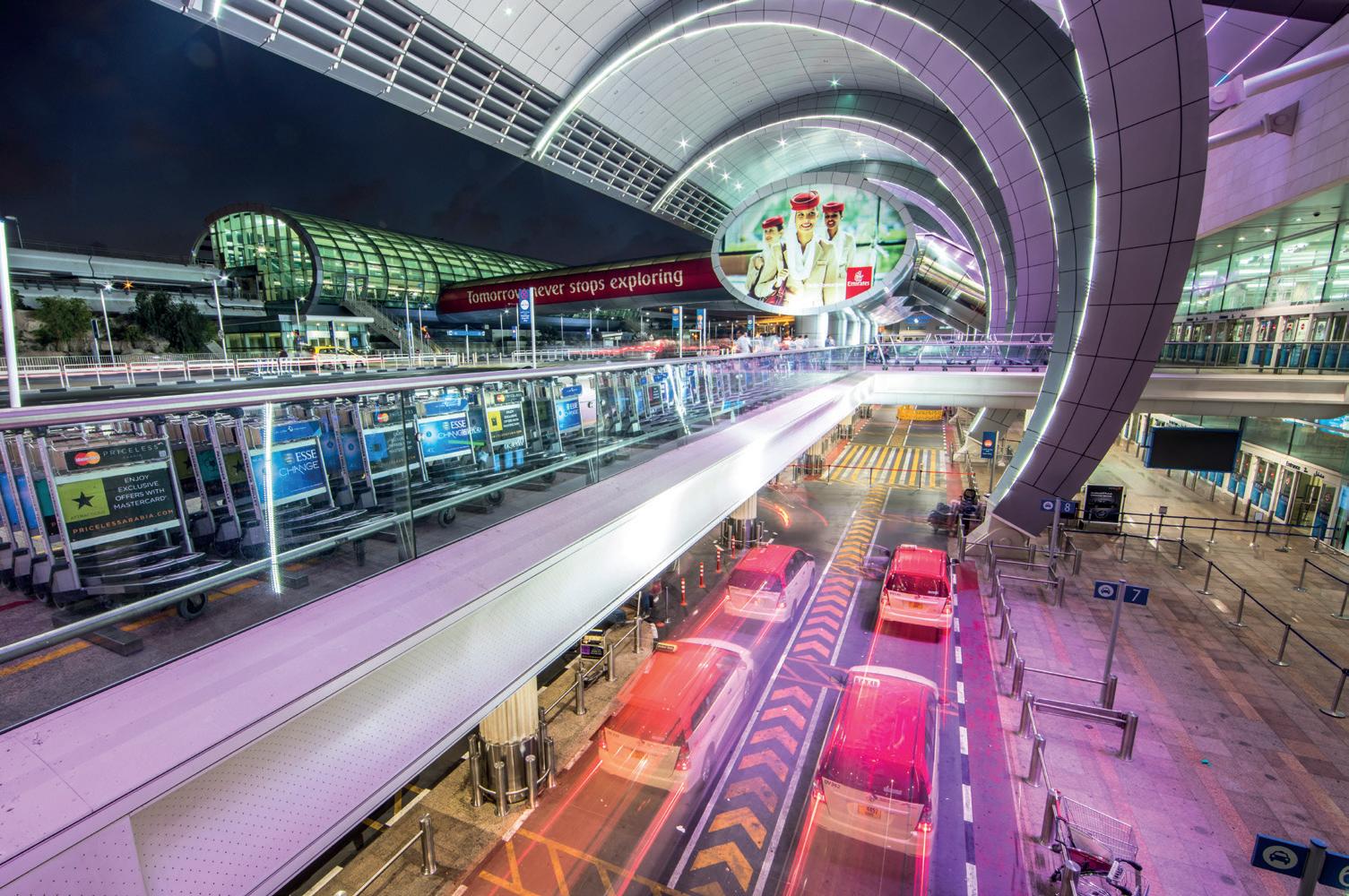
Ever since an airport was first invented in the early 20th century, most people – passengers and employees – have accessed it by using an internal combustion engine car and driving there.
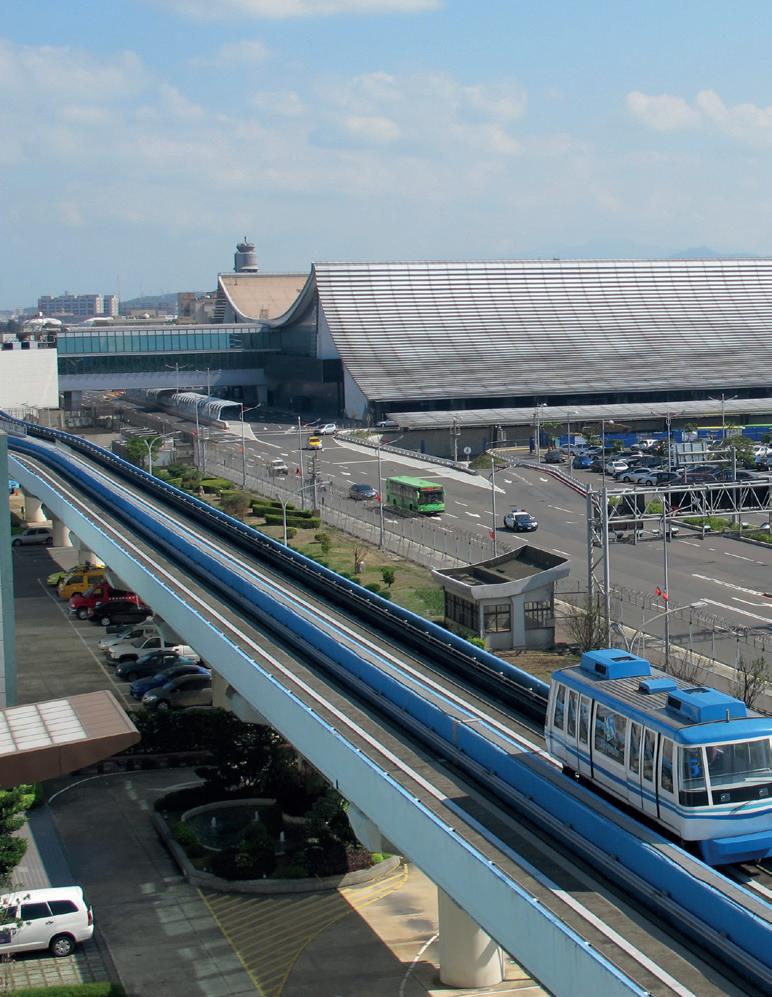
One hundred years later and airport surface access is changing. The vehicle may still look much like a car, but over the next twenty years access will undergo a revolution not seen since the invention of the gasoline powered car.
Other transport modes have eroded the car’s modal share since those early days, but even so, pre-COVID, on average, more than 80% of passengers travelled to a US airport by car and parking accounted for $4.2 billion of US airport revenue in 2017.
That will change and how airports respond to the changing technological needs and preserve revenues will be commercially and environmentally important.
We can think of the changes on two axes: first, what will power the vehicles of the future, and, second, how will they be used. Each combination of vehicle and use will present a different infrastructural challenge and different revenue threats and opportunities.
Power will be principally electricity and hydrogen, each of which will come with its own infrastructure requirements, but the key disrupter is likely to be how future vehicles will operate.
Whether owned and operated individually, as today, or as the future may hold as shared, pooled, connected or autonomous, the key issue
appears to be that the vehicle of the future is more likely to drop-off than park.
A shared vehicle will return to the pool of available vehicles for the next user, with minimal down time. While an autonomous fleet vehicle, will position itself based on demand, again reducing the time spent in one location.
The impacts for airports are obvious: increasing demand for drop-off and the need to either repurpose existing car parks, or plan 'parking' capacity to accommodate a more transient occupancy.
Drop-off perhaps creates the greatest challenge, but also the greatest revenue opportunity.
Many airports struggle today with drop-off capacity. The kerbside is naturally physically constrained by the frontage of the terminal. Efforts to expand drop-off capacity inevitably create parallel kerbside which stretch further from the front of the terminal requiring passengers to cross multiple lanes to reach the terminal.
Airports have managed this demand by increasing drop-off charges or providing free drop-off only in a remote car park, requiring the passenger to use a shuttle bus to access the terminal.
An increase in drop-off demand creates both the challenge of where to accommodate the demand, but also the opportunity for additional charges. And those charges will be necessary to substitute lost car park revenue.
The potential for reduced car parking demand, however, frees existing infrastructure to accommodate additional drop-off, albeit in a potentially more remote car park than adjacent to the terminal. This in turn creates the opportunity for a premium, in front of the terminal, drop-off facility, and a standard product in a remote car park.
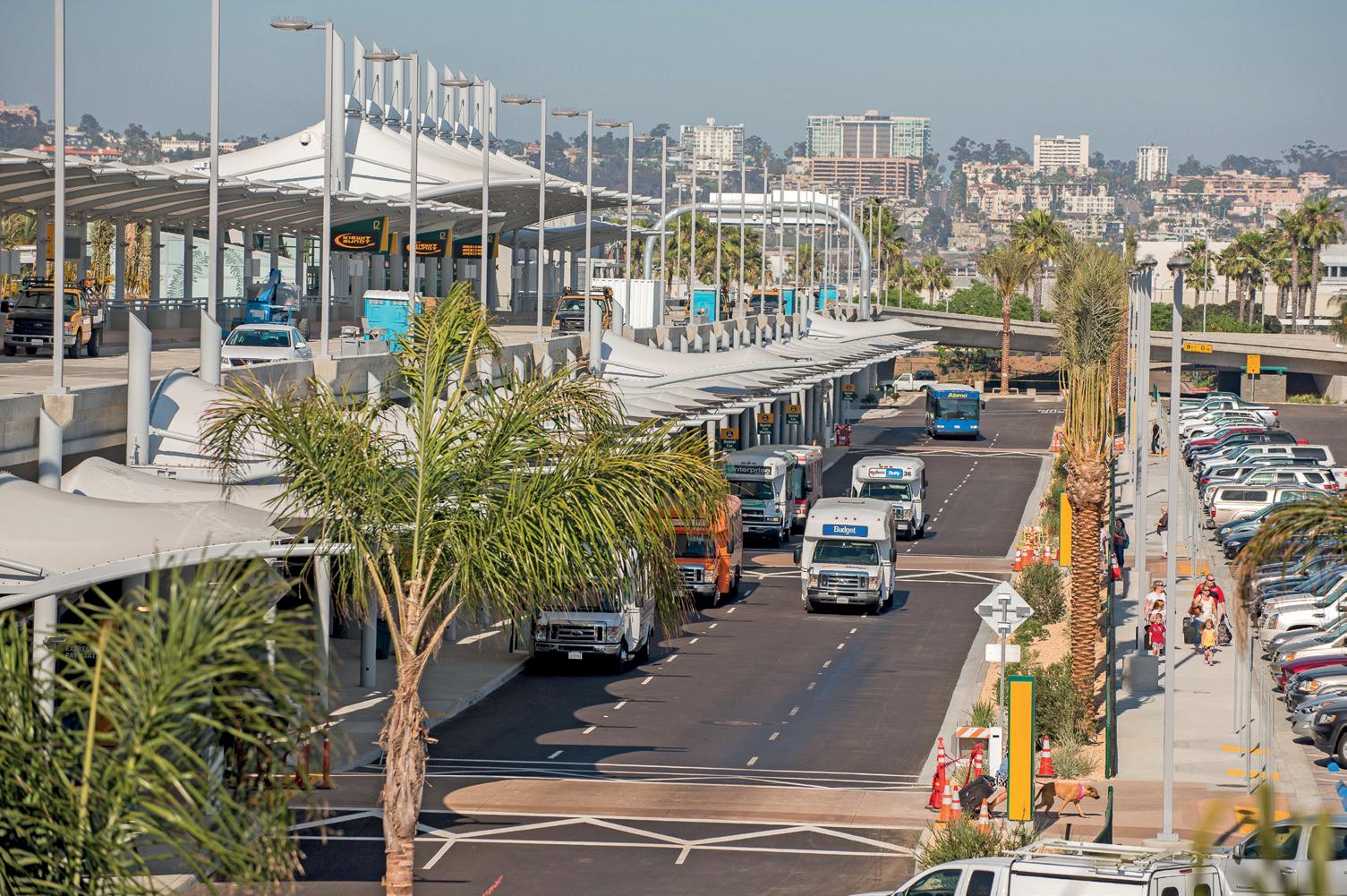
However, autonomous vehicles, able to drop off and exit independently, are not expected to form a significant part of the fleet until the middle of this century. That leaves airports with the challenge of developing their infrastructure over the next 20 to 30 years without expensively closing off future opportunities.
That 20 to 30 years will see a progression from the means of power changing today’s vehicles and, later, how those vehicles operate. Although with a range of uncertainty, it has been estimated that electric vehicles (EV) may approach 50% of the fleet by 2030 and essentially all of the fleet by 2040.
These vehicles will be either owner operated, as today, or be used in car sharing pools (Zipcar, TribeCar, for example), by transport network companies (TNCs such as Lyft and Uber), or peer-to-peer (P2) car sharing (hiyacar, for instance).
The potential for greater use of third-party vehicles (whether car shared, TNC or P2P) will increase drop-off demand, but the continued use of privately owned EVs creates the opportunity for a premium car parking product with the vehicles returned to the owner fully charged.
Through this period, existing car parking infrastructure is likely to transition from traditional parking, to parking with charging, to increasing use of its capacity being used for drop-off. Robotic parking solutions may offset the need to develop additional parking infrastructure, but we would caution that this may become redundant technology as autonomous vehicles will subsequently be able to tightly self-park without the need of a separate technology.
During this transition, airports run the risk of using legacy infrastructure built for one use for something for which it is potentially poorly designed.
For example, to accommodate increased drop-off demand, it is natural, and maybe even the only short-term solution, to relocate passengers and taxis into multi-storey car parks. But emissions linger longer in enclosed spaces, loading bays are limited and vehicles are forced to filter through one-way systems in single file.
This may lead to a poor customer experience in what may be the first or last time a passenger sees the airport, while vehicle operators may start to increase fees assuming they will have to wait in queue as they fight to get to their passenger.
Longer-term, 2040-2050 and onwards, EVs are expected to become increasingly autonomous, which will complete this transition from current car parking being principally areas for cars to stay into being transient spaces for drop-off.
Revenue models will need to follow this transition from charging for parking to charging for access as well as value-add services including premium drop-off, rapid charging, etc.
Finally, the emergence of mobility as a service (MaaS) offers the potential for all infrastructure to be used more efficiently, especially for airports served by train or metro.
Outside dense urban areas, the use of a metro first requires the passenger to transfer to the origin station. Often that is by car: so why not just drive to the airport in the first place?
MaaS offers the potential for a connected journey starting with a shared, pooled, hailed, or on-demand, journey to the origin station, and potentially the same onward connection to the airport (if not directly served), all within one ticket.
All of this should be good news for airports that have struggled to find space for car parking capacity. The short-term occupancy of their limited space, offers the potential to accommodate demand, generate premium revenue, and avoid the need to invest in expensive infrastructure.

Stood at a crossroads of technology and behaviour, airports face an interesting challenge to transition their infrastructure and revenue models.
The challenge is apparent, but also solvable, the greatest challenge perhaps comes from the uncertain timeframes and, as always, the need for airports to plan for the short-term against a medium changing landscape.
Lewis Burroughs (head of Indian aviation) and Rob Rushmer (principal) are based at ICF's London office.
News stories and developments from ACI World Business Partners across the globe.
Christchurch Airport has signed up to buy the world’s first Rosenbauer Electric Fire Truck to operate at an airport.

The New Zealand gateway's head of aviation operations, Tim Morris, says that the new addition will provide another step towards Christchurch Airport having an entirely hybrid/electric fleet.
“We are keen to accelerate the airport’s transition to clean energy trucks, and in the next few years, will replace all four trucks as new Rosenbauer models become available, until our whole fleet runs on green energy,” notes Morris.
America’s first electric Rosenbauer city fire truck is working on Hollywood streets, with the manufacturer and airport both monitoring its performance. However, current testing in Europe indicates the new airport fire truck could reduce fire service diesel usage by more than 75%.
Rosenbauer Australia and New Zealand's managing director, Arthur Weimer, enthuses: “The new truck, Rosenbauer RT, will be hybrid/ electric with further developments to hydrogen in the future. That will be well placed to take advantage of the airport’s intention to include green hydrogen within Kōwhai Park.”
Morris adds: “The Rosenbauer RT Electric Fire Truck‘s new technology will give our teams the ideal combination of ‘clean energy’ operation, required compliance and fire fighting capacity at all times. Other benefits include lowering of future operational expenses due to the hybrid/electric technology with fewer moving parts and a significant savings in fuel costs."
Los Angeles World Airports has selected an HDR-led team to provide programme management and construction management services for the landside portion of its transformative Airfield and Terminal Modernization Project (ATMP).
The far-reaching modernisation will add a new terminal, concourse and airfield upgrades at Los Angeles International Airport (LAX) as well as a new elevated roadway system and numerous roadway improvements.

The landside portion will be delivered through a progressive design-build approach, and HDR will assist LAWA in the overall management of the programme. Divided into two phases, the first will be generally focused on design and preconstruction services, while Phase 2 will be focused on construction.
The more than $1 billion series of landside projects that are a part of the ATMP will include designing and constructing more than 18 lane-miles of roadway, replacing the entry and exit into LAX’s Central Terminal area and adding connections to the new terminal that will also be part of the ATMP.
An elevated roadway system will separate local traffic from airport traffic to reduce neighbourhood congestion.
“The ATMP project will dramatically improve the passenger experience at LAX and requires a top-notch team to meet its aggressive timeline — aiming for substantial completion ahead of the 2028 Summer Olympics,” said HDR principal program manager, Scott Jarvis, who is leading the HDR team.
“HDR looks forward to working with LAWA to deliver these roadway improvements successfully while maintaining traffic and making the transition as seamless as possible for travellers.”
Worldwide Flight Services (WFS), a member of the SATS Group, has opened its air cargo terminal and cold chain facility at Kempegowda International Airport in Bengaluru, India.
WFS was awarded the 15-year licence to operate the international cargo terminal and cold chain facility in June 2022 by way of a partnership with Bengaluru airport operator, Bengaluru International Airport Limited (BIAL). It will be responsible for the development, operation, management and maintenance of the international cargo terminal and is also the exclusive operator of the dedicated cold chain facility at the Indian gateway.
Plans are already underway to double the terminal’s annual throughput to more than 250,000 tonnes per annum.
John Batten, WFS' CEO for Europe, Middle East, Africa & Asia, said: “India is the sixth-largest global economy and the single-largest provider of generic drugs globally. We are confident that we can add value to the Indian air cargo industry by introducing world-class practices, safety and security standards, sustainable practices and operational excellence to drive productivity improvements and achieve greater efficiency to enhance the government of India's National Air Cargo Policy and achieve related ambitions.”
New computed tomography (CT) security scanners in Terminals 1 and 2 have made passenger and baggage checks at Munich Airport safer, faster and more convenient.
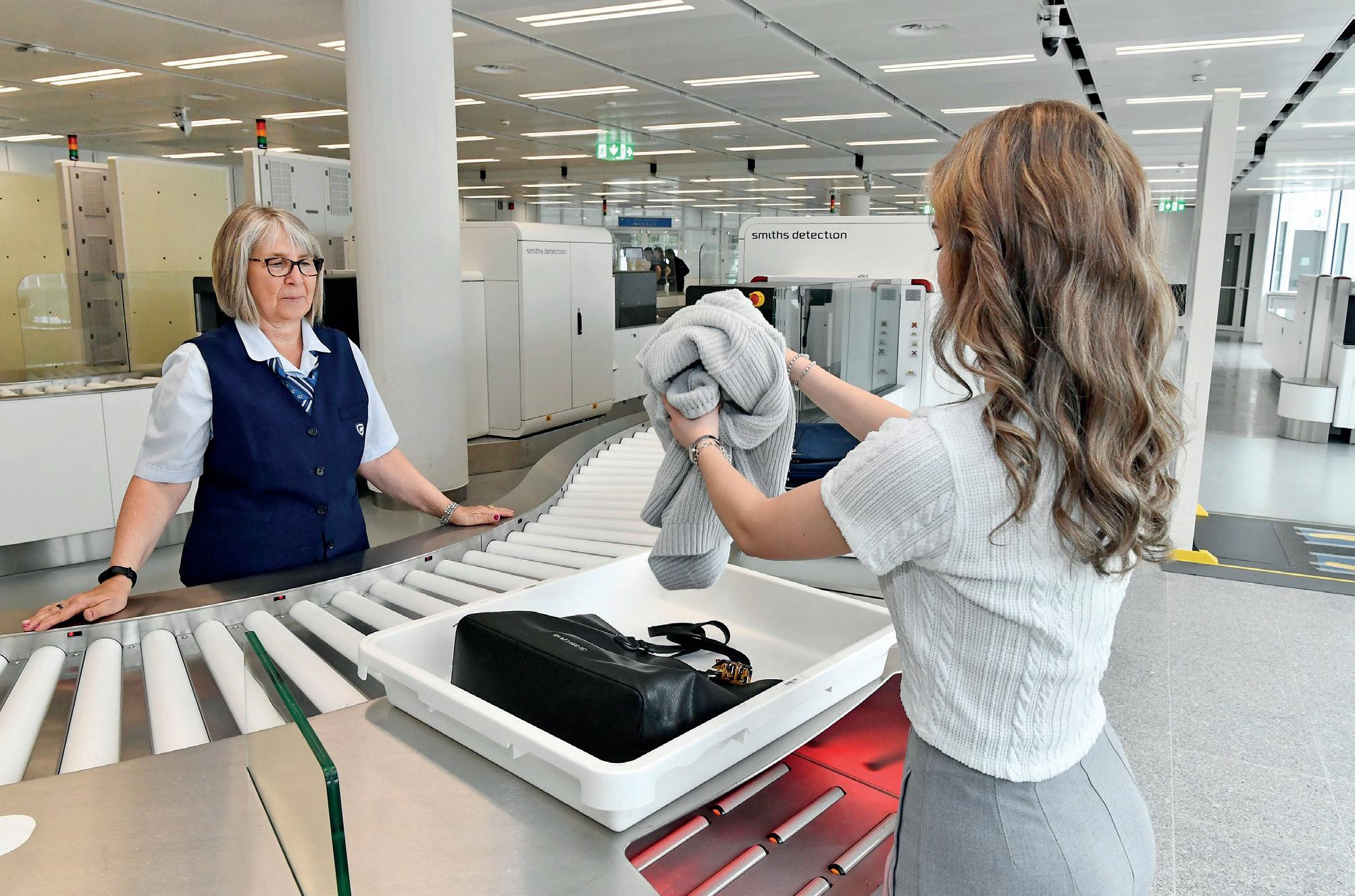
“We have subjected the technology to extensive tests, and the results are unequivocal: Passengers like the scanners because they no longer have to unpack their laptops and liquids, which makes the checks must faster,” said Bavaria’s Transport Minister, Christian Bernreiter, who was at the airport for their unveiling.
“Moreover, the CT scanners provide additional security by seamlessly and automatically detecting explosives and other dangerous items.”
Bavaria is investing more than €45 million to equip all checkpoints at Munich Airport with the modern 3D technology from Smiths Detection. Another advantage of the new checkpoints is that more passengers can place their luggage on the belt at once, which reduces waiting times.
A double lane can thus handle up to 520 passengers an hour – an increase of around 160%.
Munich Airport CEO, Jost Lammers, says: “The new CT scanners are the next level in terms of security, fast processing and convenience. An important component in offering our guests a more pleasant travel experience.”
Air travellers in Bavaria are the first in Germany to fully benefit from the modern security technology as, in addition to the two pilot systems in use at Munich Airport’s Terminal 2 since 2019, three further screening lanes in Terminal 1 and two in Terminal 2 will go into operation at the beginning of the Whitsun holidays.
All other checkpoints will be upgraded in ten further construction phases by the start of the summer holidays in 2026, when up to 48 lanes and 60 CT scanners will be in use.
Honeywell has launched an updated suite of solutions to enhance its gate, turnaround and airfield lighting portfolios.
According to Honeywell, the latest solutions will help optimise gate operations and improve situational awareness for pilots and airside operations teams, resulting in faster turnaround times for aircraft. The latest solutions were unveiled at the 2023 Airport Show in Dubai.
“Honeywell provides the latest technology solutions that help airports become more resilient, efficient and sustainable, topics that are more critical than ever as we approach the busy summer travel season,” says Alex Cowen, general manager for global airports, Honeywell Building Technologies.
“Our solutions are designed to meet the challenges that impede efficiency and safety, such as ramp obstacles, adverse weather conditions, maintenance and management of gate downtime and capacity optimisation like airport congestion.”
The expanded range of solutions include Honeywell's NAVITAS™ Smart Visual Docking system; Turnaround Manager; Single Lamp Control & Monitoring System (ASDv5 SVL); Safety Voltage Limiter (SVL); and Loop Sensor.
The Smart Docking System incorporates advanced technologies such as sensor data fusion using AI/ML-based video and LIDAR, multi-colour ramp information display, obstacle detection and wingtip collision prevention, all-gate layouts, all-weather capability and is said to ensure low-to-no maintenance and robust cybersecurity features.
While the Loop Sensor offers localised and cyber-secure detection of various types of aircraft and vehicles, estimates their velocity and direction up to 4,000 metres away, and is capable of functioning in all weather conditions. AW
Dr Richard Plenty and Terri Morrissey consider the pros and cons of adopting a systematic data-based approach to decision-making in the workplace.
The Nobel prize winning psychologist Daniel Kahneman in his book ‘Thinking Fast and Slow’ describes two human systems for decision making: fast, intuitive thinking and slow, rational thinking. Both types of thinking are vital, but what is most appropriate at any time depends on the circumstances.
For example, professional pilots flying in good conditions can make rapid visual assessments of where they are and how they are doing. But when they are flying at night or in cloud, they are taught to rely on their instruments – the evidence – rather than their instincts.
In difficult conditions – and complex, changing or uncertain circumstances – relying on intuition alone can be dangerous. Gathering data and objective evidence provides a sounder basis for decisions. Organisations sometimes don’t do enough of that when addressing their people issues.
We came across a very good example of this when working with a large multinational organisation where there was a high turnover of young talented engineers. The conventional wisdom was that this could be remedied by better induction, training, higher pay and carefully managed career progression.
These solutions had been put into place at considerable cost – but the engineers still kept on leaving. It was only when the evidence from employee survey data, turnover statistics and exit interviews was put together systematically that it became obvious that the real reason for people leaving was that there wasn’t enough challenge on the job. People wanted more responsibility, not more support.
This kind of systematic data-based approach to decision-making is becoming formalised as ‘evidence-based HR’. At the European Association for Work and Organisation Psychology (EAWOP) Conference we recently attended in Katowice, Poland (May 2023), Prof Rob Briner pointed out that a ‘conscientious, explicit and judicious’ approach to collecting evidence from multiple sources can increase the likelihood of a favourable outcome when making decisions.
He described a six-step approach:
1. Ask the right question; 2. Acquire and gather data from multiple sources; 3. Appraise the data, taking into account its credibility; 4. Aggregate the information; 5. Apply the findings; and 6. Assess (and learn).
All of this sounds straightforward, but our experience is that putting evidence-based HR into practice can be difficult. There isn’t always backing from the top. Some organisation leaders are reluctant to invest time and resources in exploring ‘people’ issues deeply and are not open to changing their minds if new evidence emerges.
Others feel that time spent ‘thinking’ and in the collection of evidence might be better spent ‘doing’ – trying things out to see what works in practice.
Despite these difficulties, our view is that evidence-based HR is likely to grow rapidly in importance, as organisations demand evidence to help them prioritise investment and make better, more considered decisions.
It will be turbocharged by the enormous strides being made in digital and AI, as well as advances in psychological science. Professional organisations such as the CIPD (Chartered Institute for Personnel Development) and CRF (Corporate Research Forum) are providing strong backing.
At the same time, it is important to remember that leadership judgement and accountability for choosing a particular course of action can’t be reduced to straight logic. In a changing world, what happened in the past might not always be a reliable guide to the future.
Leadership requires balancing and integrating many variables and choosing action, which takes into account the big picture – vision, values, overall strategy and ethics. And as we heard from other speakers at EAWOP, leaders also need to bring people with them by creating a sense of community, belonging and shared identity.
We need both logic and intuition to get the most from our organisations and our people.
Sydney Airport will shortly begin the search for a new CEO after the announcement that Geoff Culbert will step down at the end of the year. Culbert, who has held the position for almost six years, joined the publicly listed Sydney Airport as CEO in January 2018 from GE and will continue in his role until the end of the year to ensure a smooth transition.
CV Deepak is Airport Authority of India’s new airport director for Chennai Airport, succeeding Shri Raju. Deepak was formerly general manager (Finance & Accounts) taxation cell at AAI’s corporate headquarters in New Delhi.
Kam Jandu has returned to Budapest Airport to become its new CEO, succeeding Chris Dinsdale, who left earlier in the year to become the new president and CEO of Calgary Airport Authority. Jandu knows Budapest Airport well having originally joined the Hungarian gateway in 2009 and formerly working as its executive director of aviation director and chief commercial officer before leaving for a brief spell with Munich Airport International in 2021/22.
Terri Morrissey and Dr Richard Plenty run ACI’s Human Resources training. They received a Presidential Citation from the American Psychological Association in June 2022 for their leadership in advancing global psychology. Contact them at info@thisis.eu
THE GLOBAL AIRPORT COMMERCIAL REVENUES CONFERENCE
25 & 26
Organised by
Hosted by

